The Portuguese island of Madeira is but a mere speck in the middle of the Atlantic Ocean (only 35 miles by 14 miles!) yet has a dizzying amount of unique things to see and do. It was one of my best travel surprises of the past few years and far exceeded my expectations. I’ve been telling everyone about this little-known jewel of the Atlantic ever seen and have quite a few posts to show you its natural attractions, tropical wonders, historical riches, and fabulous food.
The fun starts in its capital, Funchal, after a hair-raising landing on a tiny strip by the water. The approach will have given you your first glimpse at the city’s picturesque position (and a few heart palpitations). White houses with terracotta roofs are clustered on the steep hills, slopping down to the ocean through tropical greenery like a natural amphitheater.
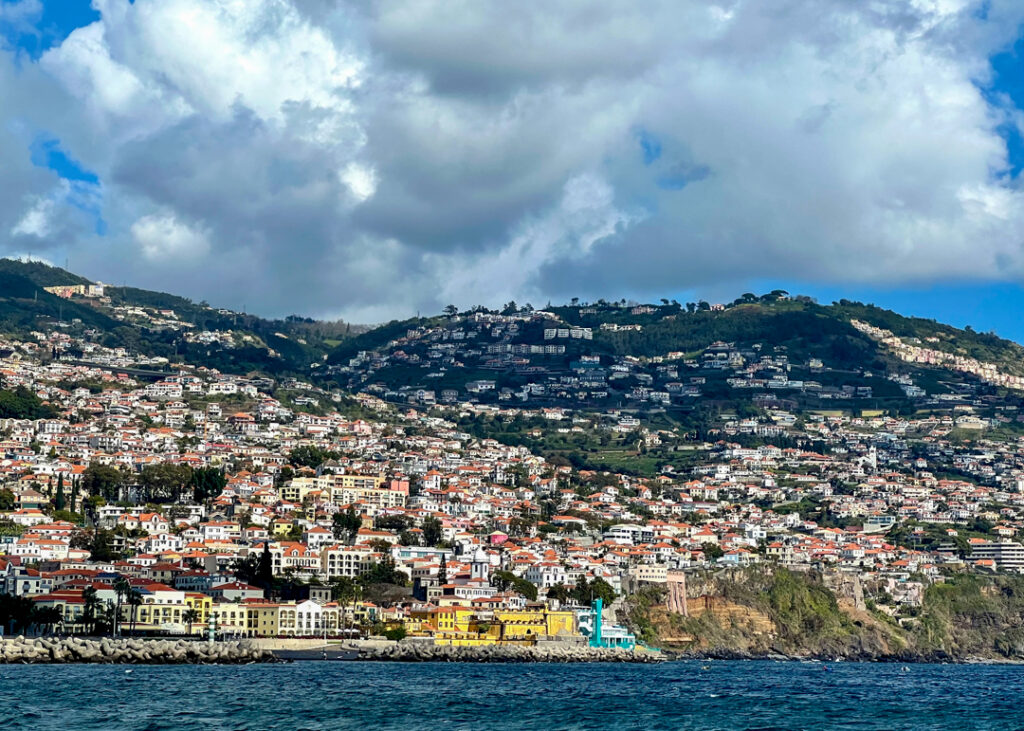
The compact city begs to be explored on foot though you’ll want to take advantage of its cable cars to access some of the attractions located high on the hills. Start with a scenic stroll through its center with its grand gothic and baroque-style buildings, all in the island’s signature style of dark stone and white façade.
The city center
Praça do Municipio, one of the largest squares in Funchal, makes for a scenic stop with the Town Hall in its center, an imposing church, an art museum, and the mountains peeking behind. Notice the distinctive and beautiful fish-scale patterned pavement on the square which you’ll find in many pedestrian areas, called Calçada Portuguesa (Portuguese pavement). It almost looks like a giant chessboard.
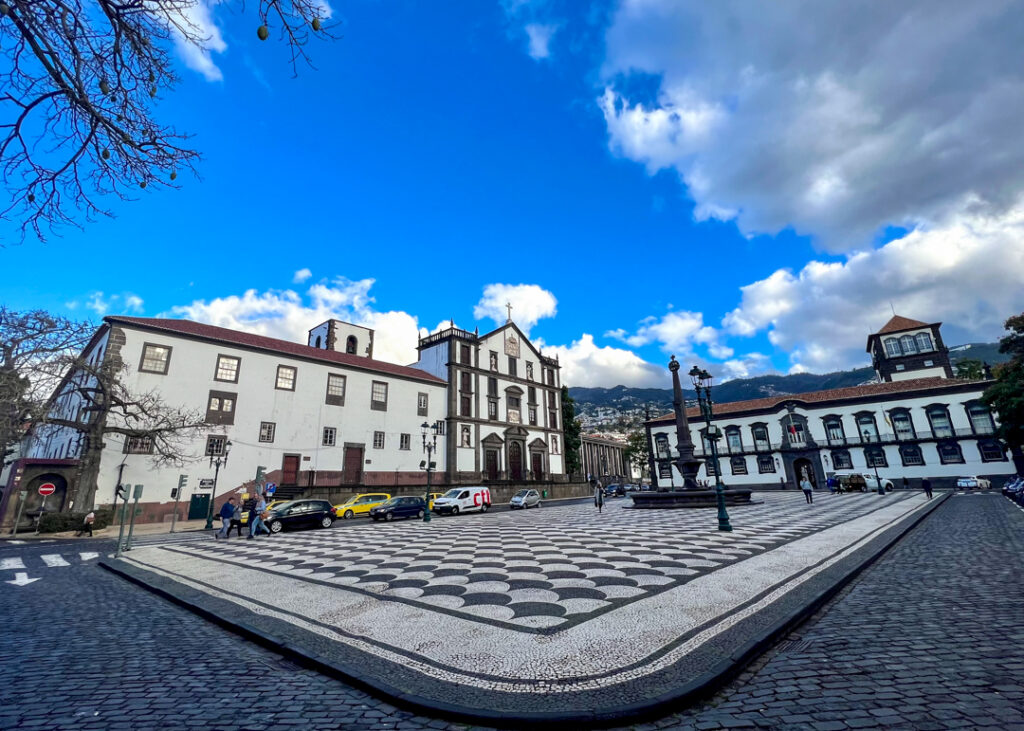
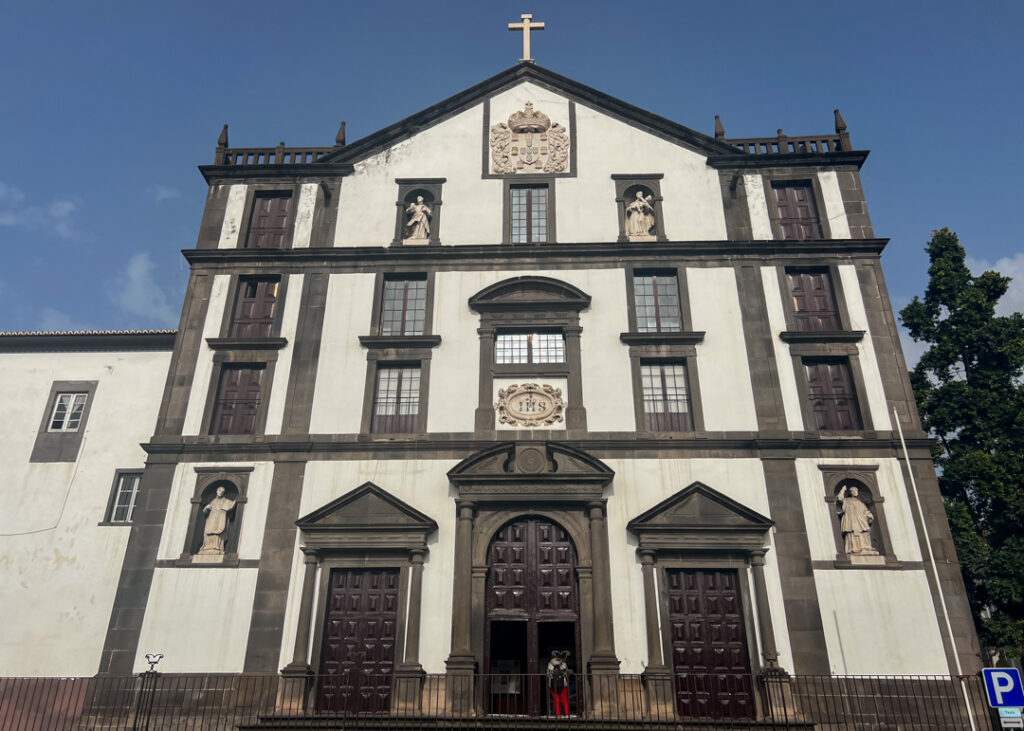
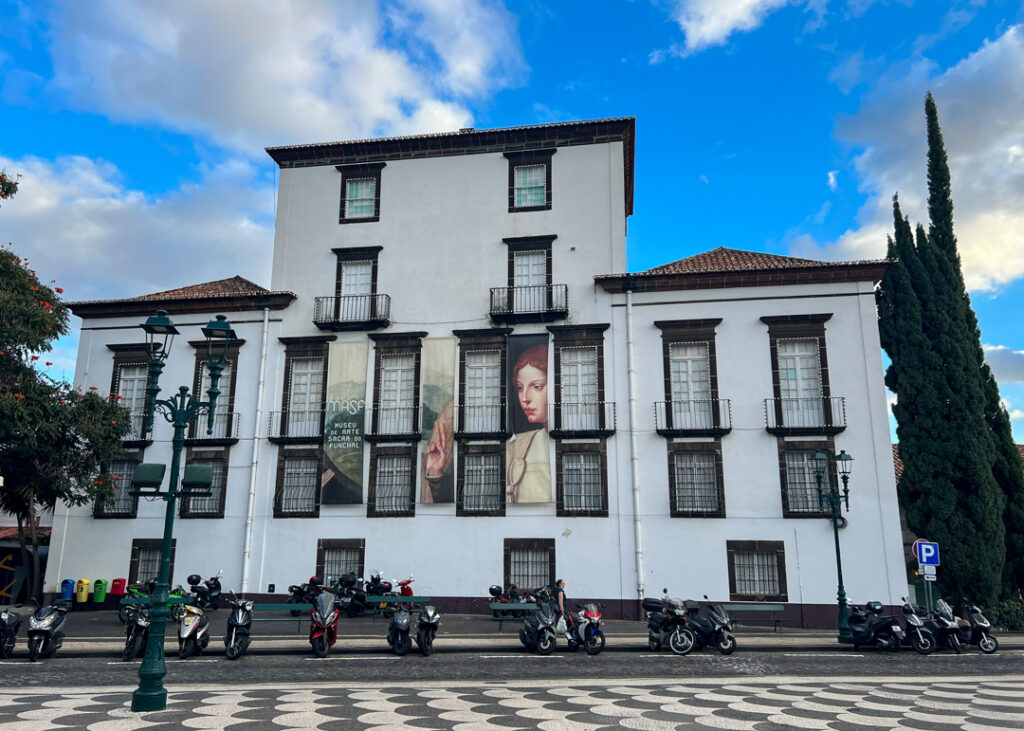
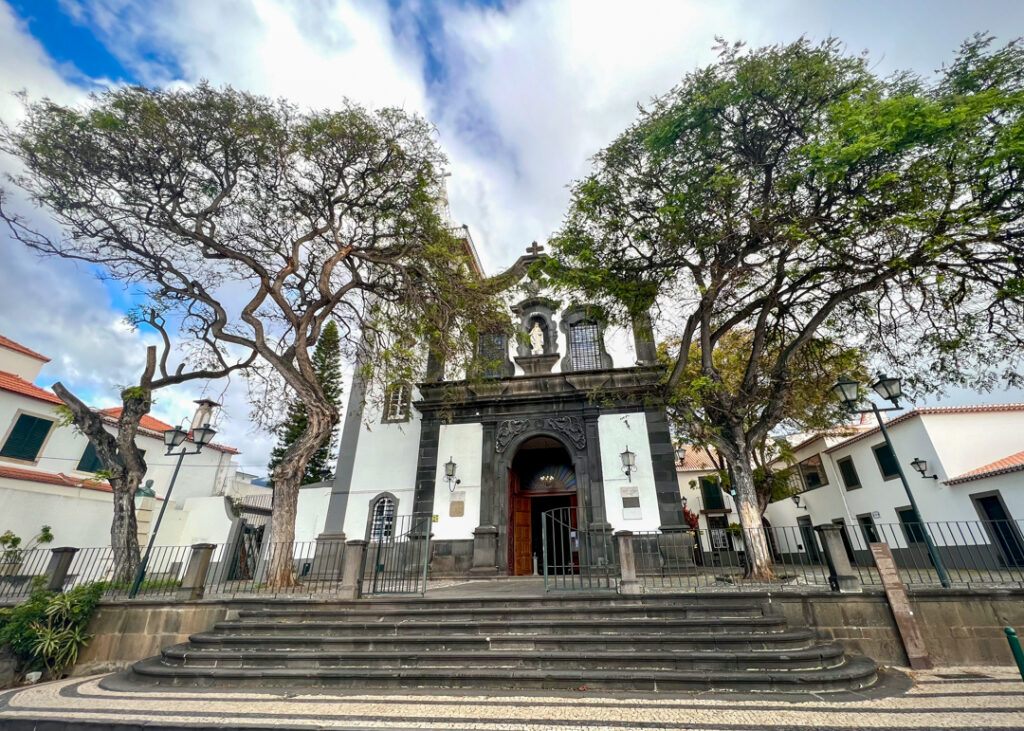
The main street, Avenida Arriaga, is a majestic pedestrian avenue lined with towering trees, lively cafes, and historical buildings. The statue at its center is of João Gonçalves Zarco, one of the island’s discoverers and a popular meeting point.
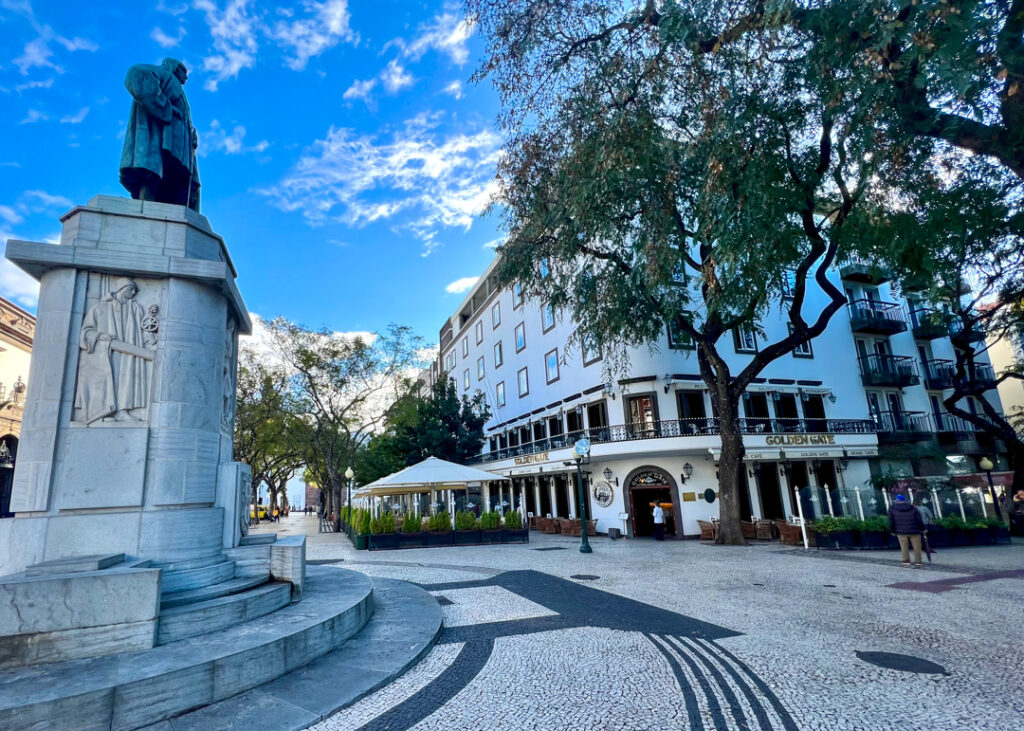
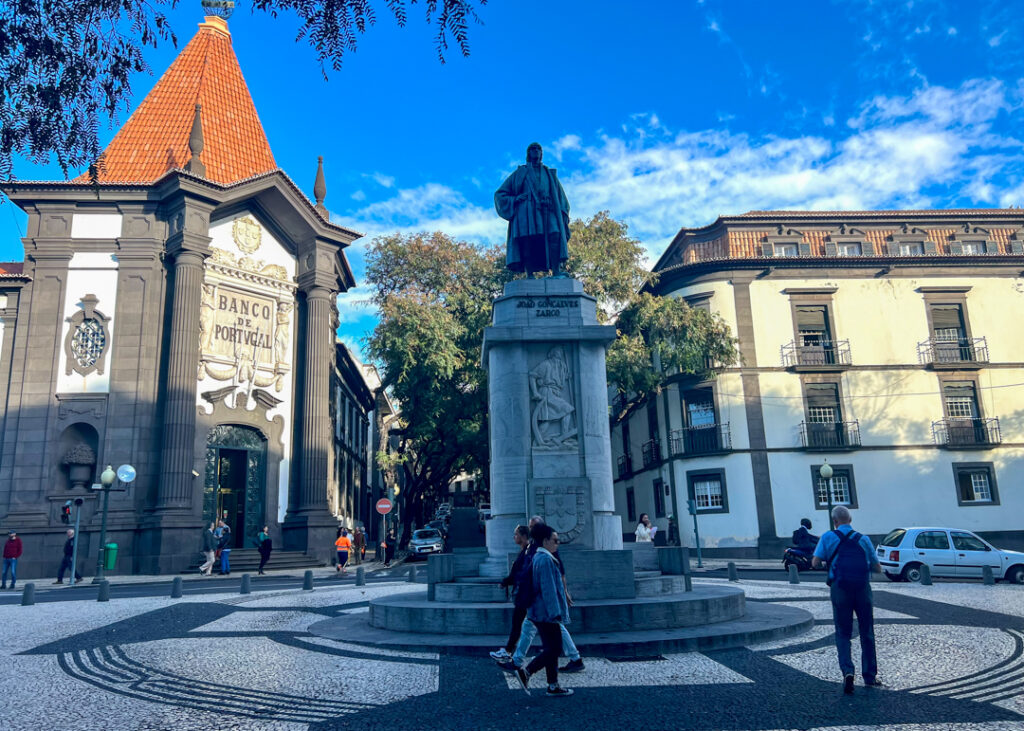
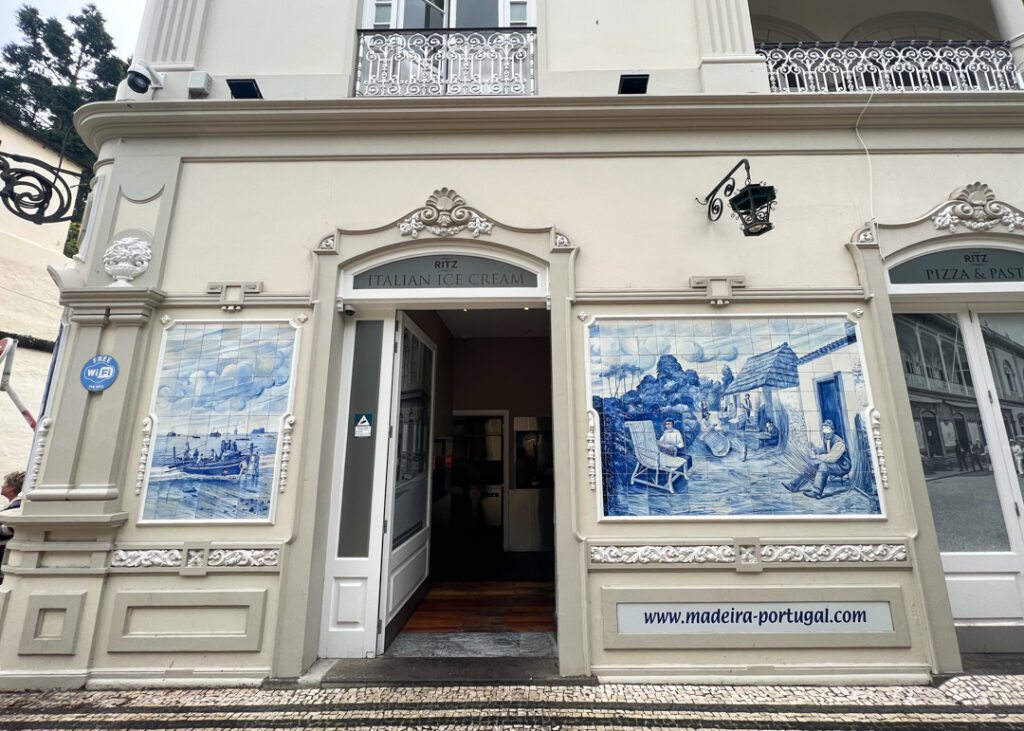
A block away on the seafront, the dominant building is the Palácio de São Lourenço (1540). It once guarded the bay against pirates and is now the residence of Madeira’s prime minister and the military command with white-gloved sentries seen guarding the entrance.
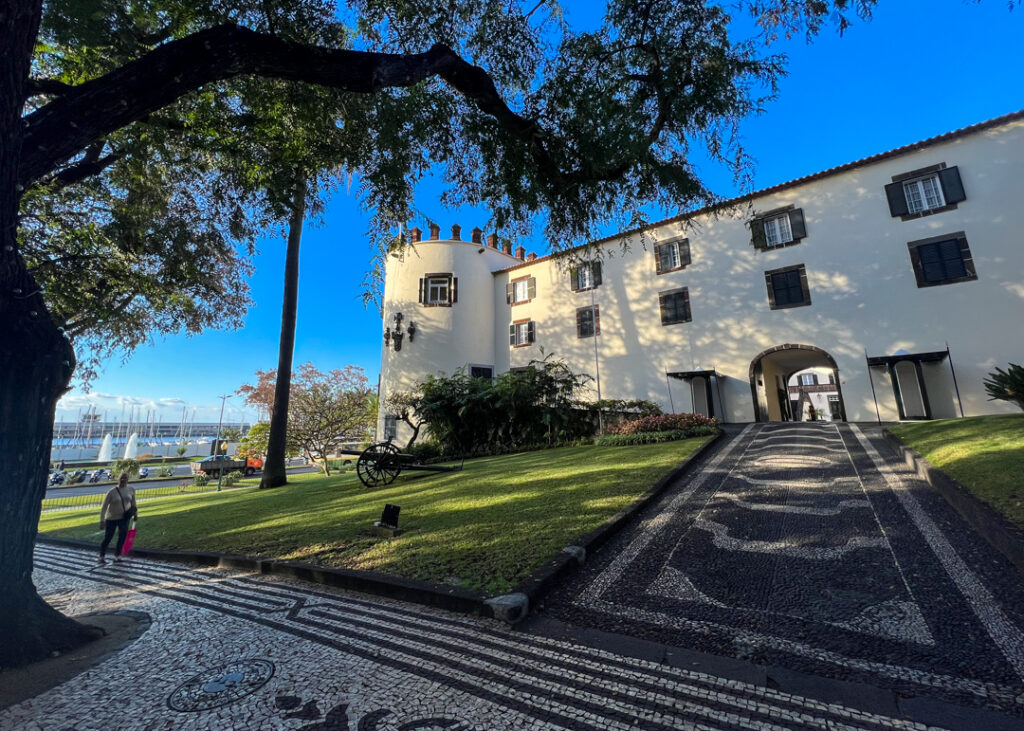
Keep walking along the sea promenade to spot this modernist fountain on the side of the parliament library.
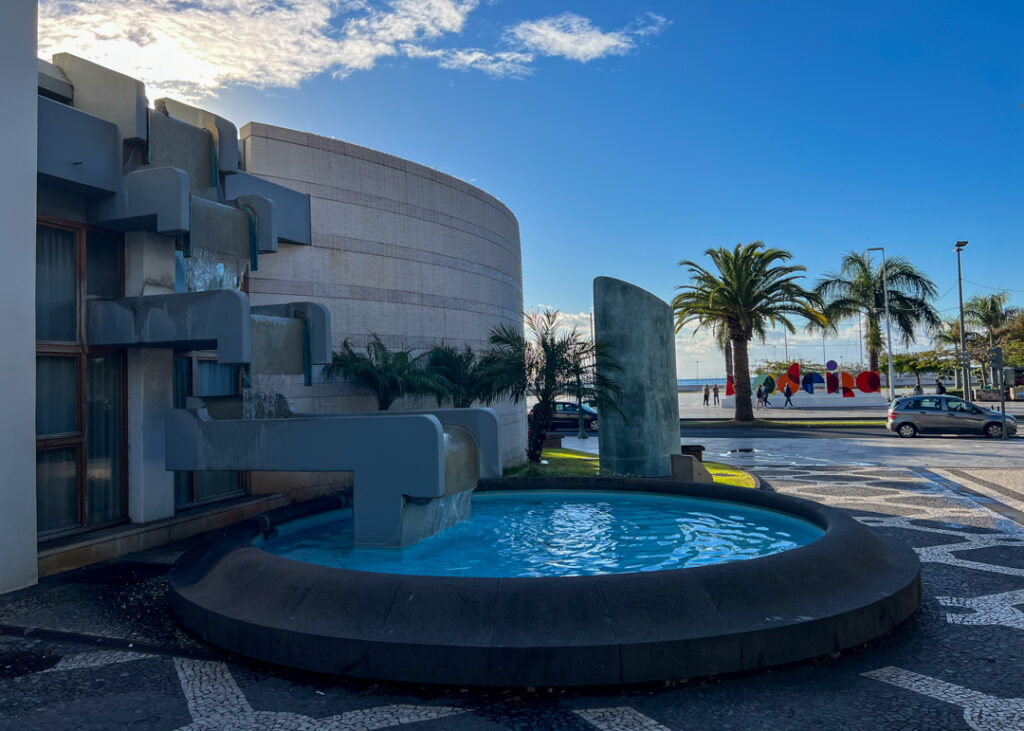
Little alleyways lead to quiet courtyards and hidden chapels.

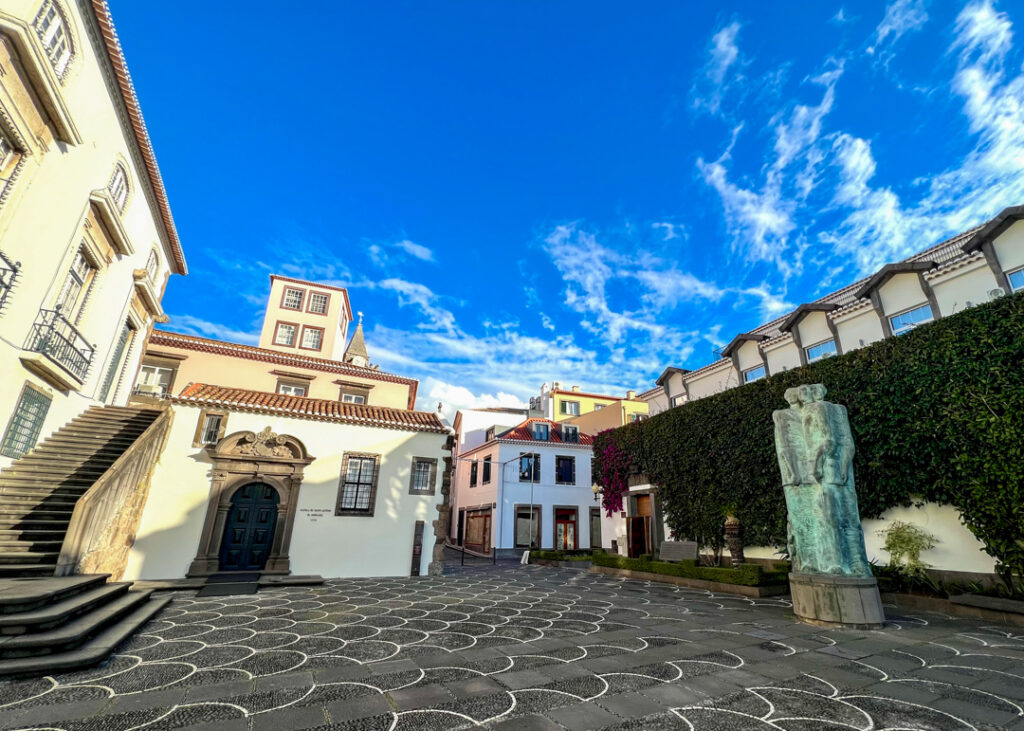
Museums, mansions & local shops
The busier Rua da Carreira is lined with old-fashioned shops and affordable restaurants and home to the Photography Museum of Madeira.
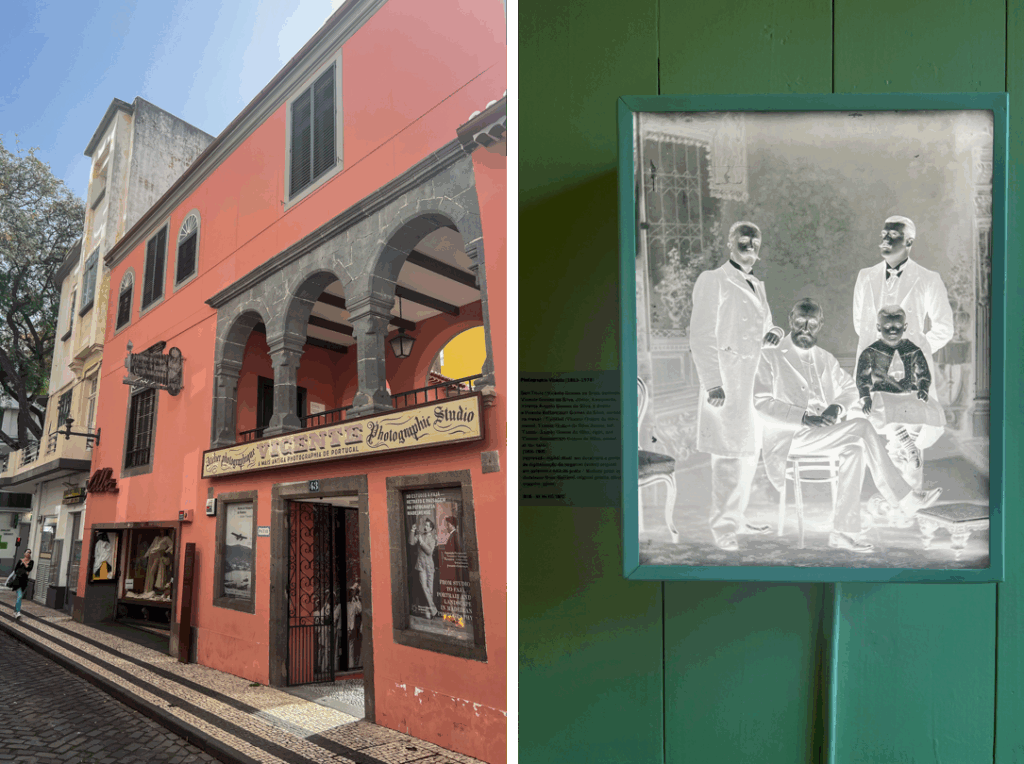
Based on a 19th-century family-owned photographic studio, the oldest in Portugal, it offers a fascinating insight into the history of photography and life on the island back then through archived pictures.
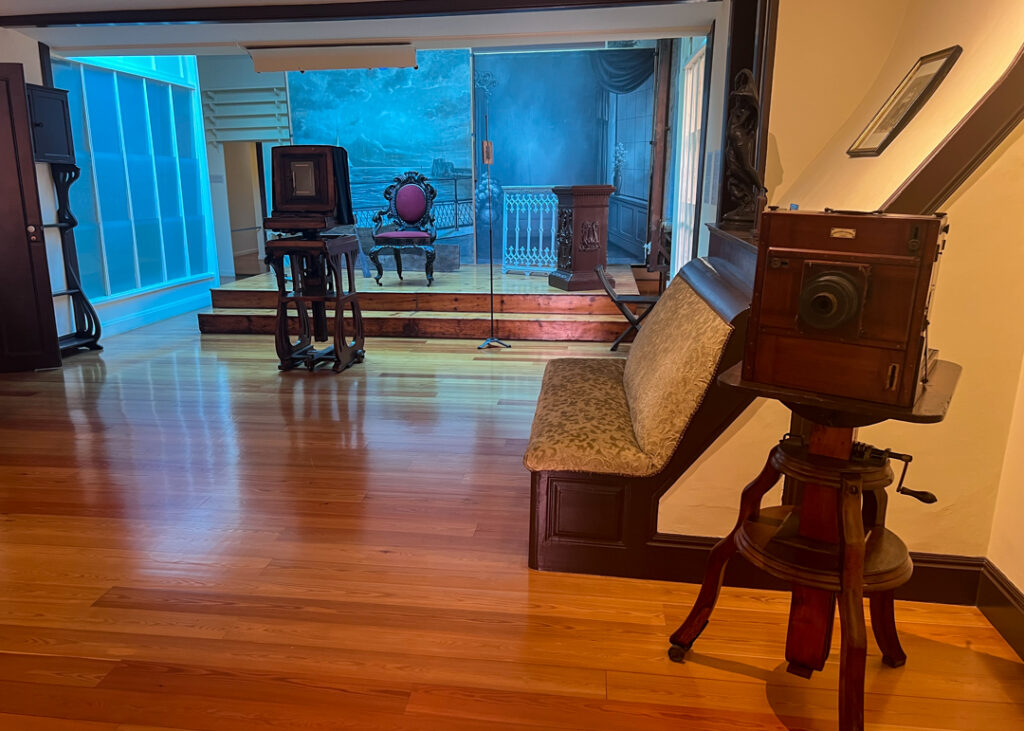
My favorite museum in Funchal though had to be the House Museum of Frederico de Freitas up the steep Calçada de Santa Clara. The 17th-century house of this collector (who leased it in the 20th century) is split into two: the old pink mansion, furnished to evoke the affluent lifestyle of its past inhabitants including many beautiful paintings of Madeira…
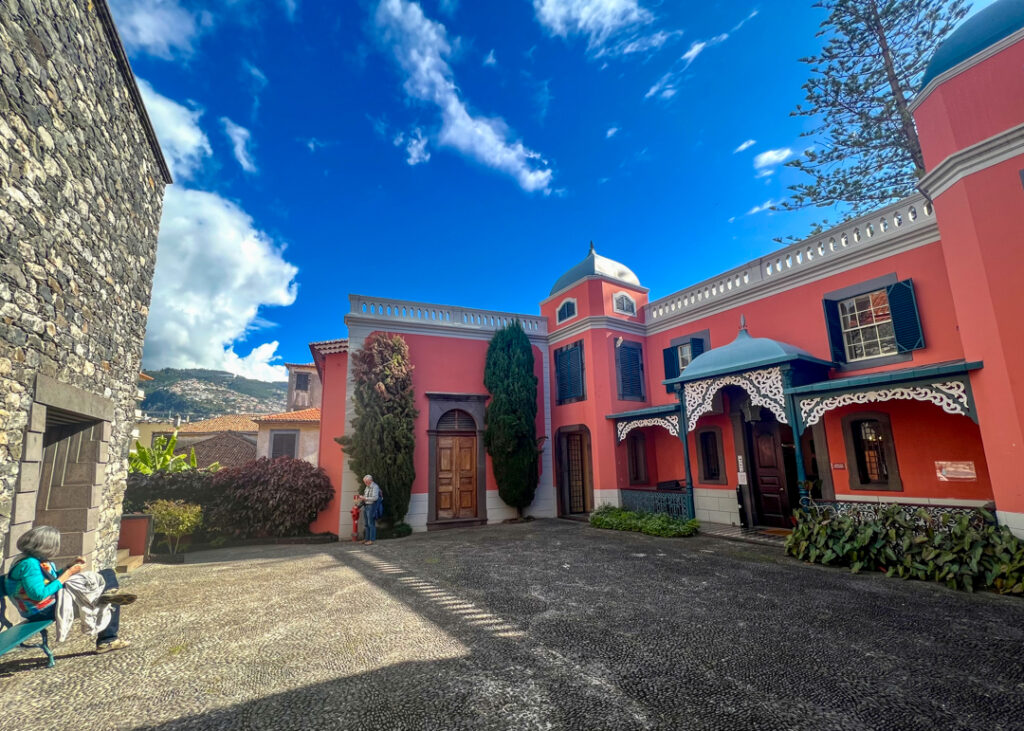
…and the modern wing, dedicated to azulejos and their history which I’ve always been particularly fond of. It covers beyond Portugal and aggregates beautiful specimen from the 13th century to the present from the Orient and Europe, including a significant collection of Dutch tiles.
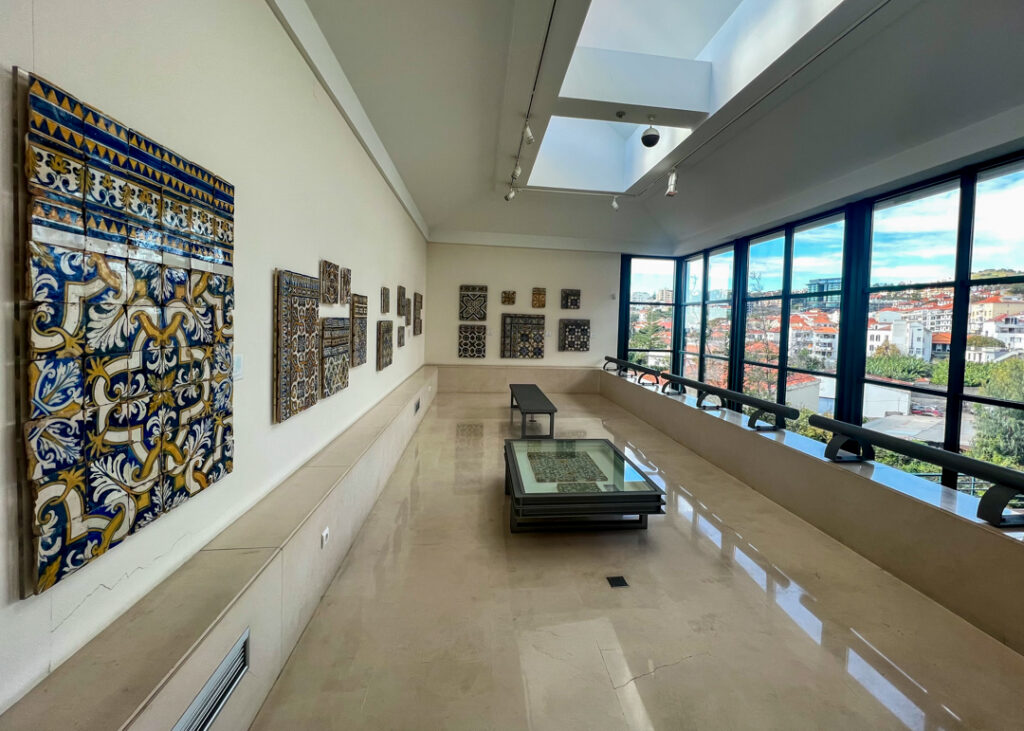
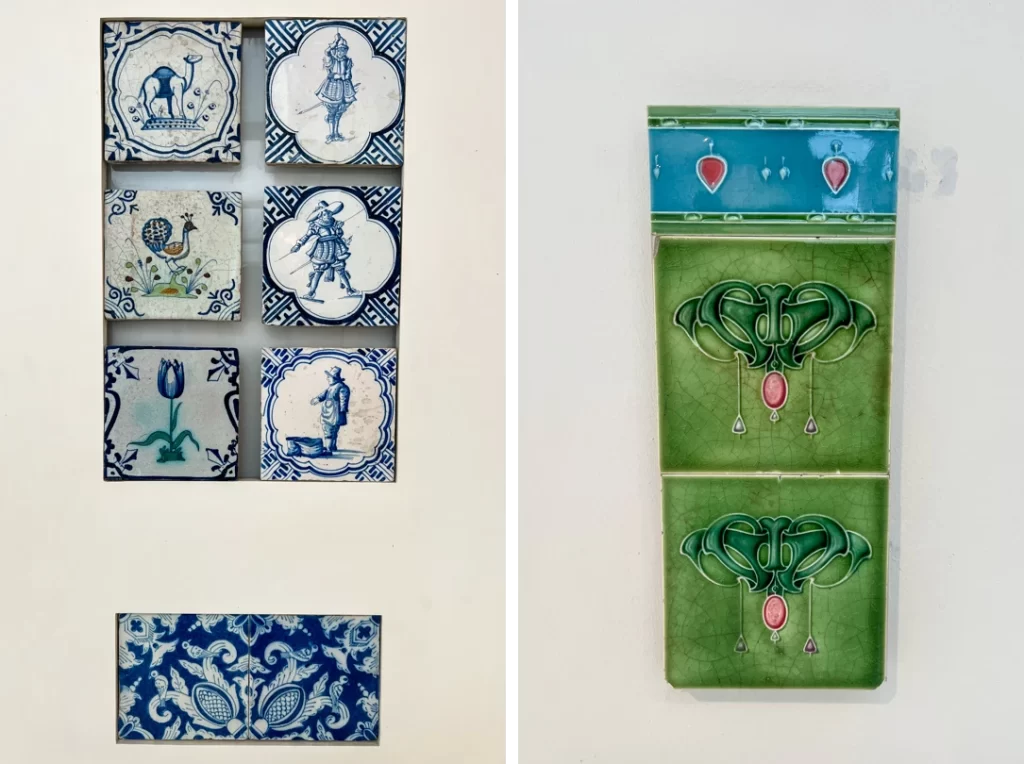
Your tours ends on the mansion’s rooftop where you can stroll briefly through one of the few raised gardens still in existence in the city.
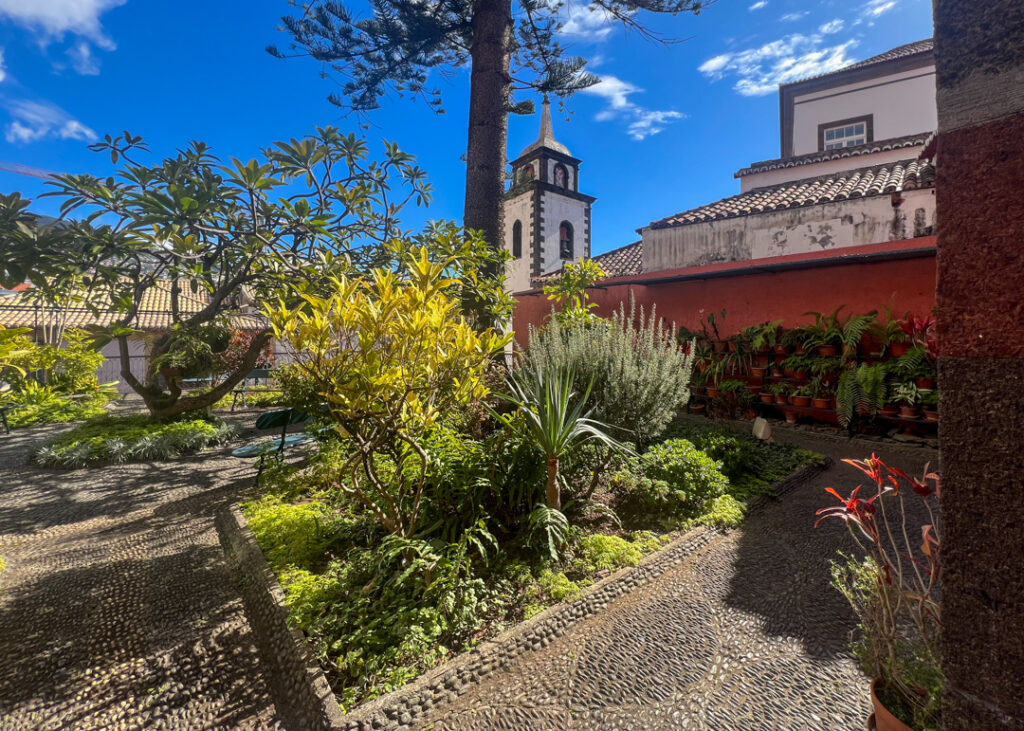
Nearby is Funchal’s principal landmark, the Sé cathedral, one of the island’s oldest buildings which was completed in 1517. It has a rather simple exterior but the gothic interior is lavish with splendid decorations mixing Moorish design and even some azulejos tiles.
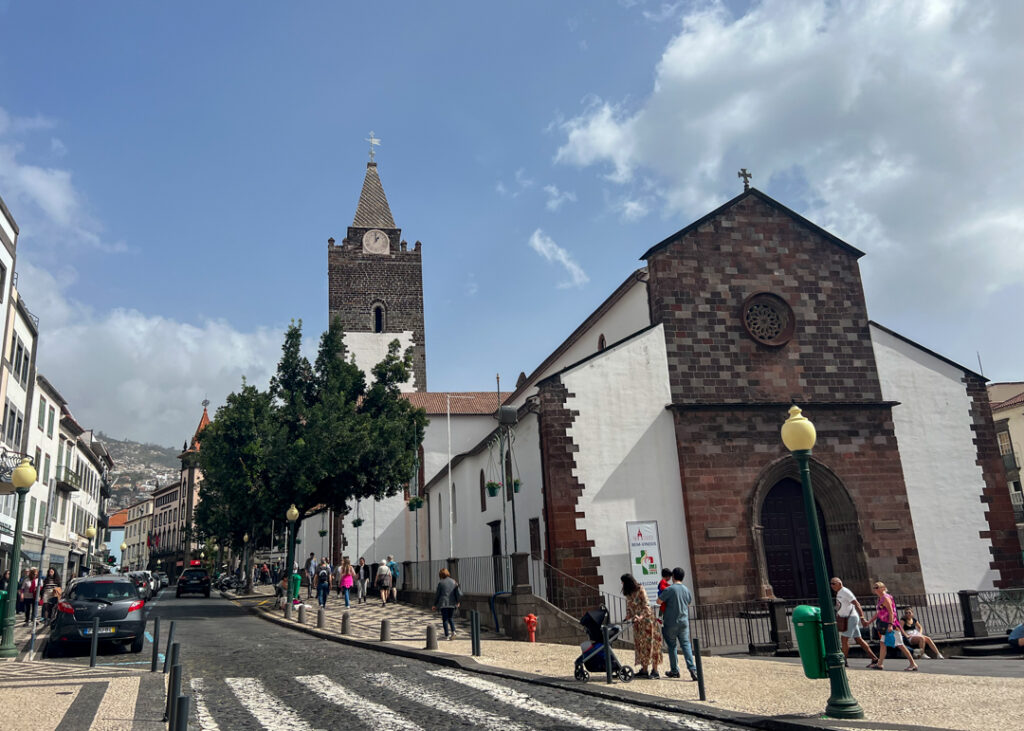
The narrow shopping streets north of the cathedral are well worth exploring and a delight for pedestrians, offering a respite from the midday sun since they’re most often shaded.
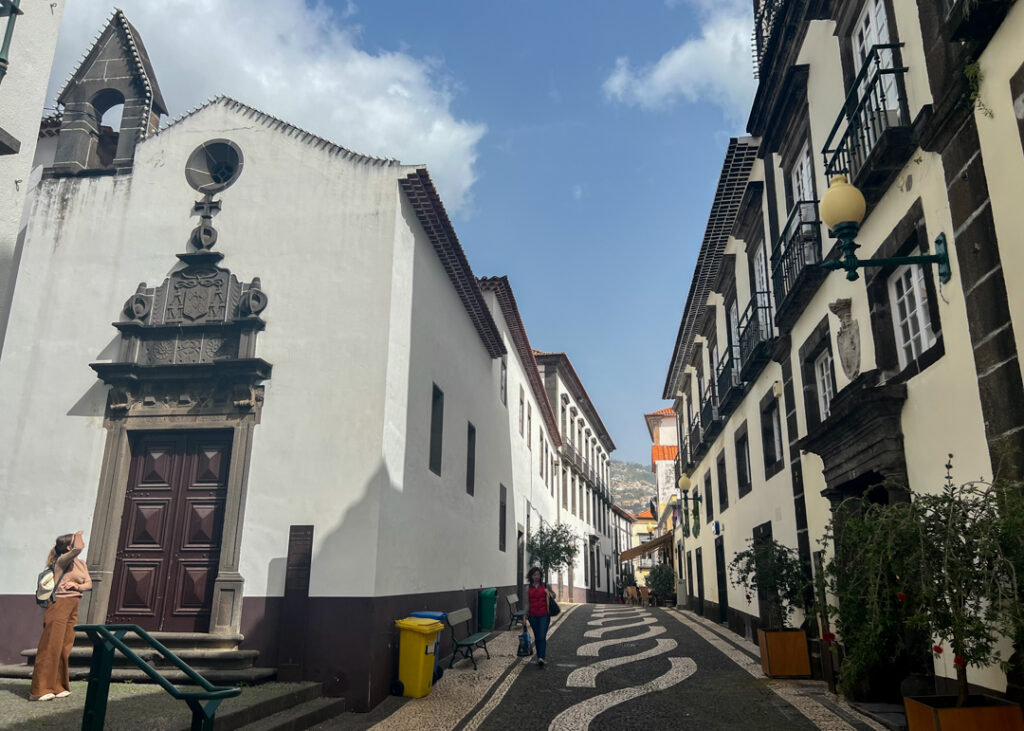
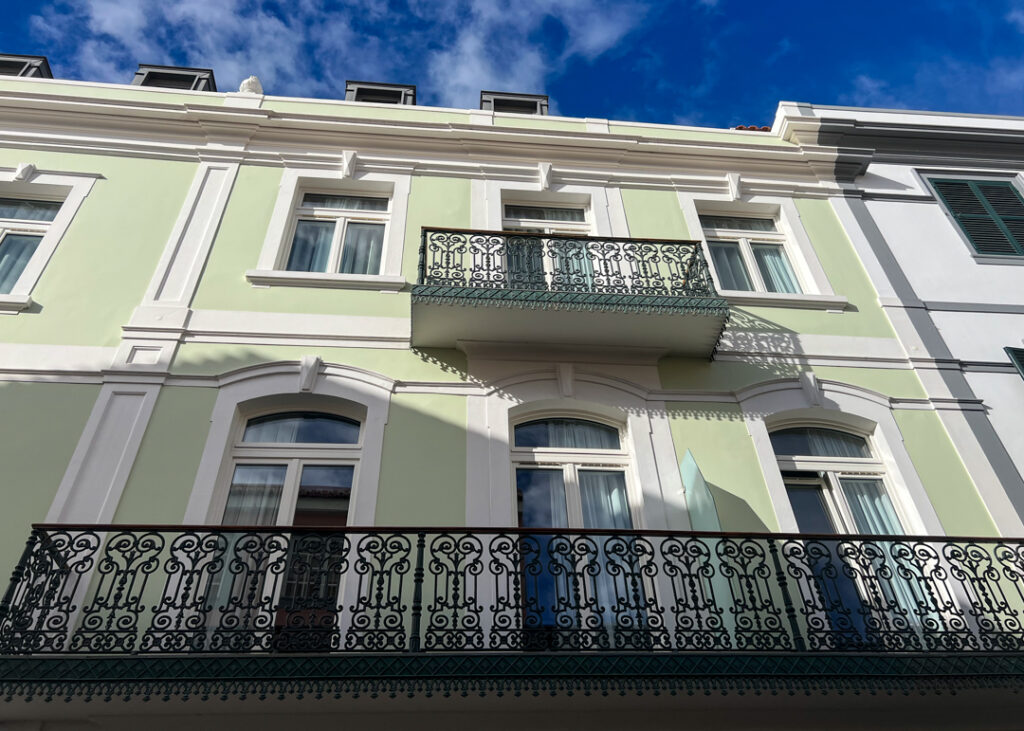
Many businesses are set within historical buildings dating back hundreds of years.
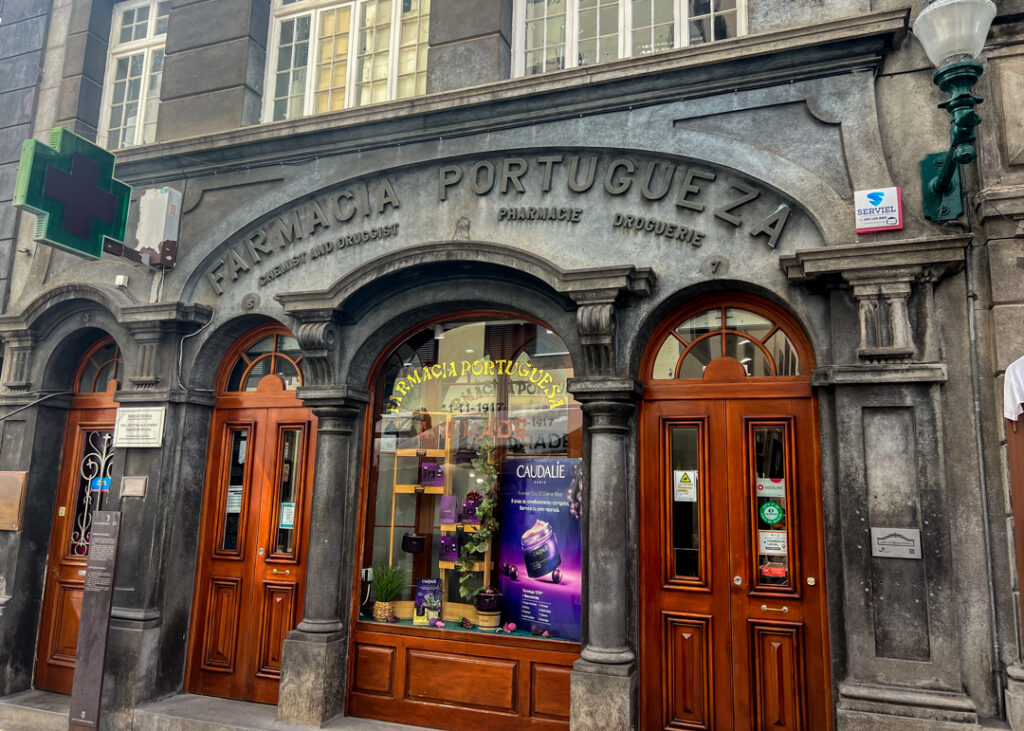
Restaurants and cafes have tables spilling onto the street, creating a bustling atmosphere that increases as the work day ends. Pick a seat and enjoy people watching!
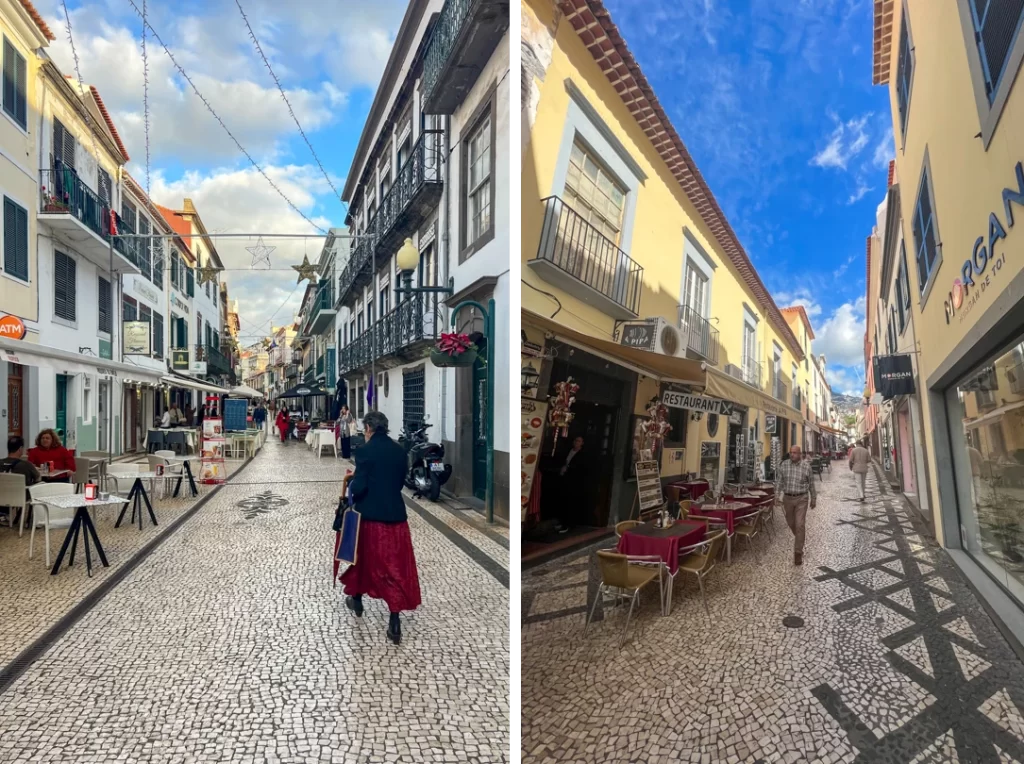

Make a stop at Fábrica Santo António, the island’s first cookie and biscuit factory, dating back to 1893.
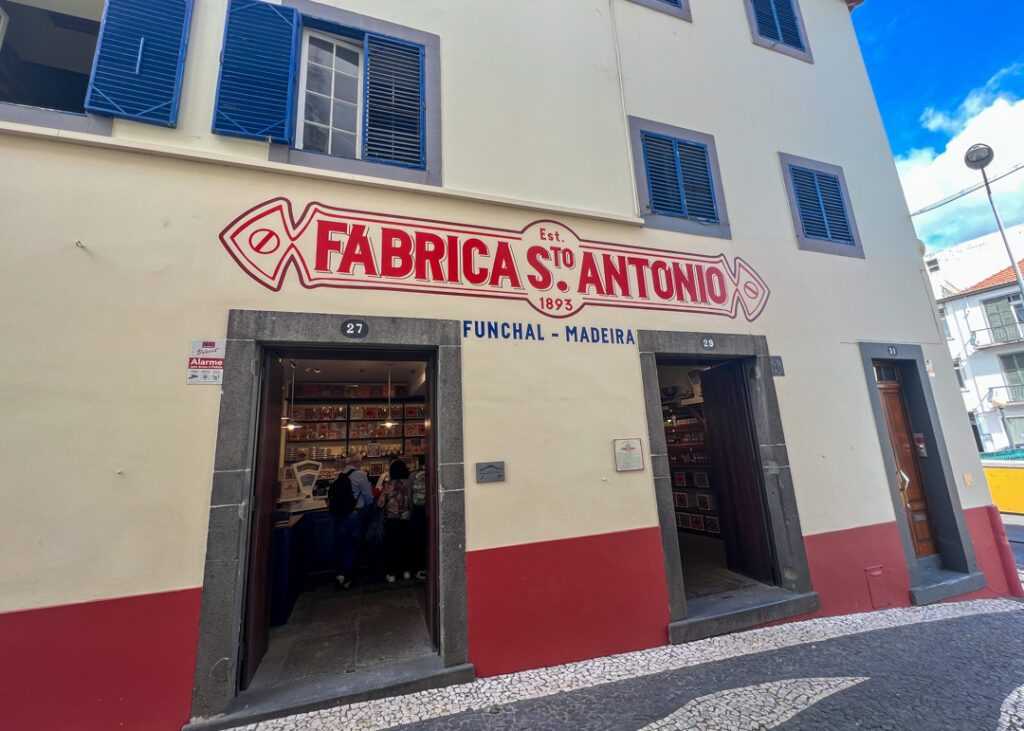
The vintage interior is charming as are all the tins and boxes lining the shelves. Besides cookies, you can also buy Madeira’s traditional sugarcane honey cake (great to bring back as a souvenir as it keeps for a while!), handmade candies, jams, etc.
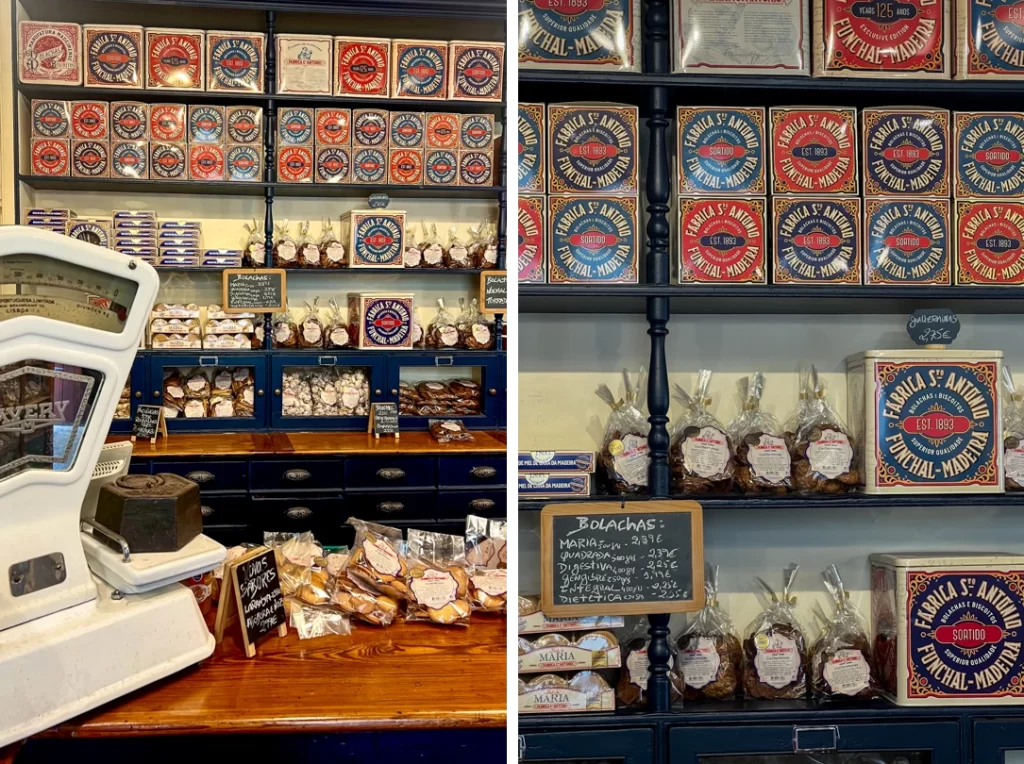
The Fábrica is right by one of the two main canals that splits Funchal’s center in half, with the historical downtown we just visited west and the “old town” just east of here. They carry excess water from the mountains to the sea.
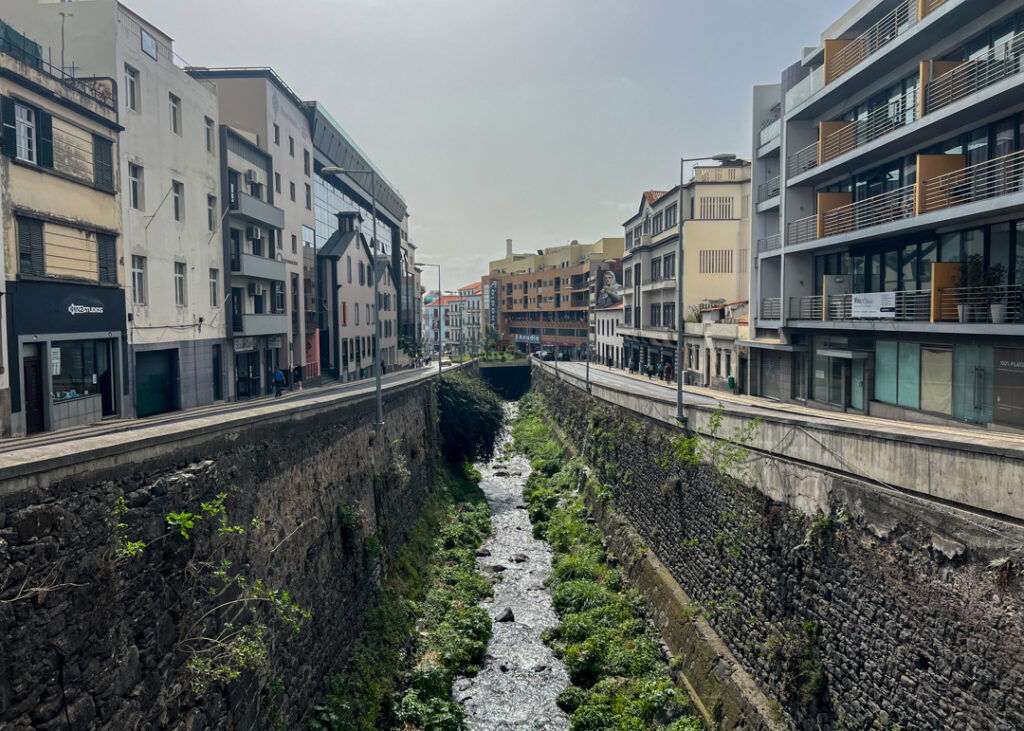
This main intersection is where major roads converge and buses routes start so you’ll likely pass by here quite often.
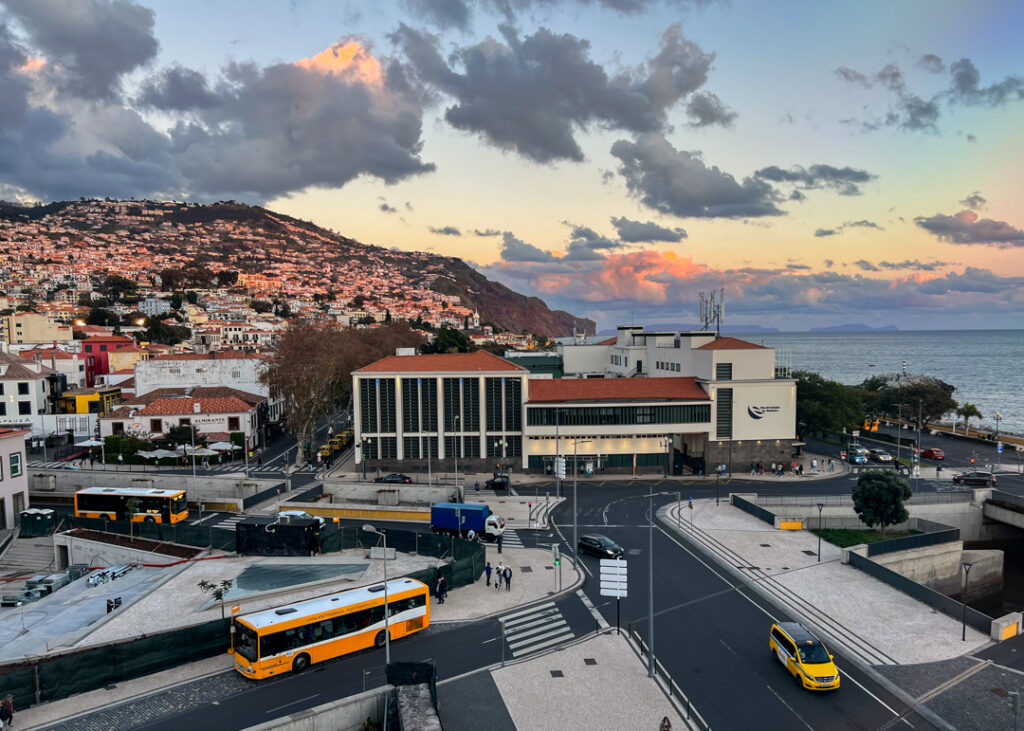
I had front row seat to this central location from my AirBnB…
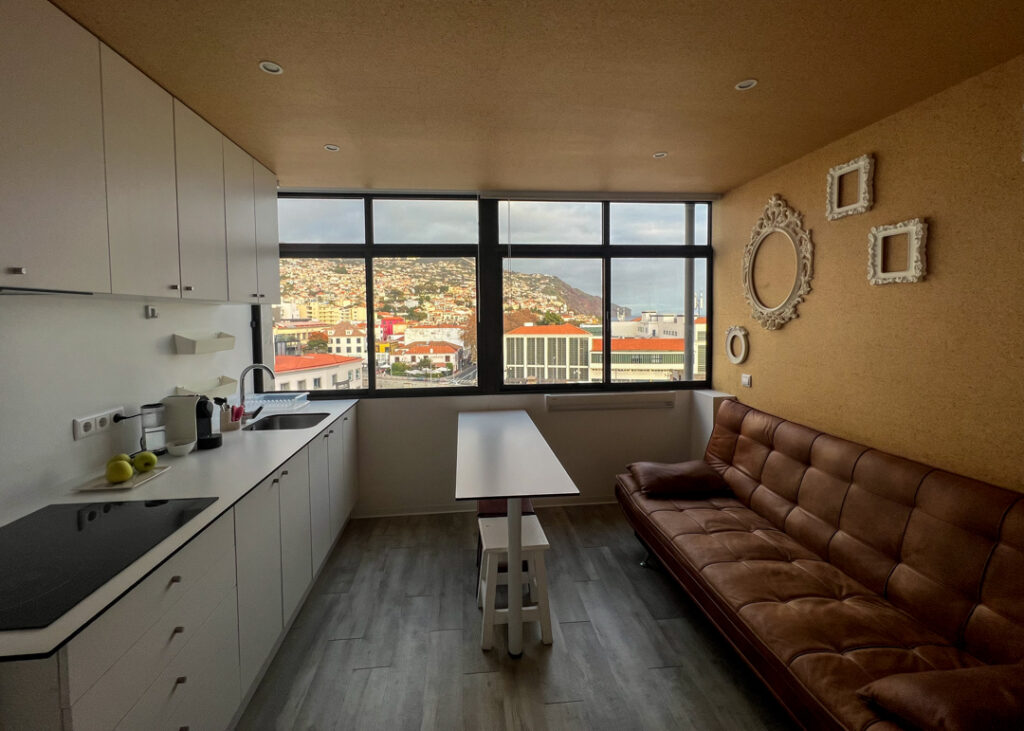
…though besides the convenient placement it’s the daily rainbows appearing above the hillside that did it for me. And this is not an exaggeration, rainbows appear NEARLY EVERY DAY on Madeira, probably due to its topography and geology which means it’s always raining and sunny somewhere on the island at any time…magical!
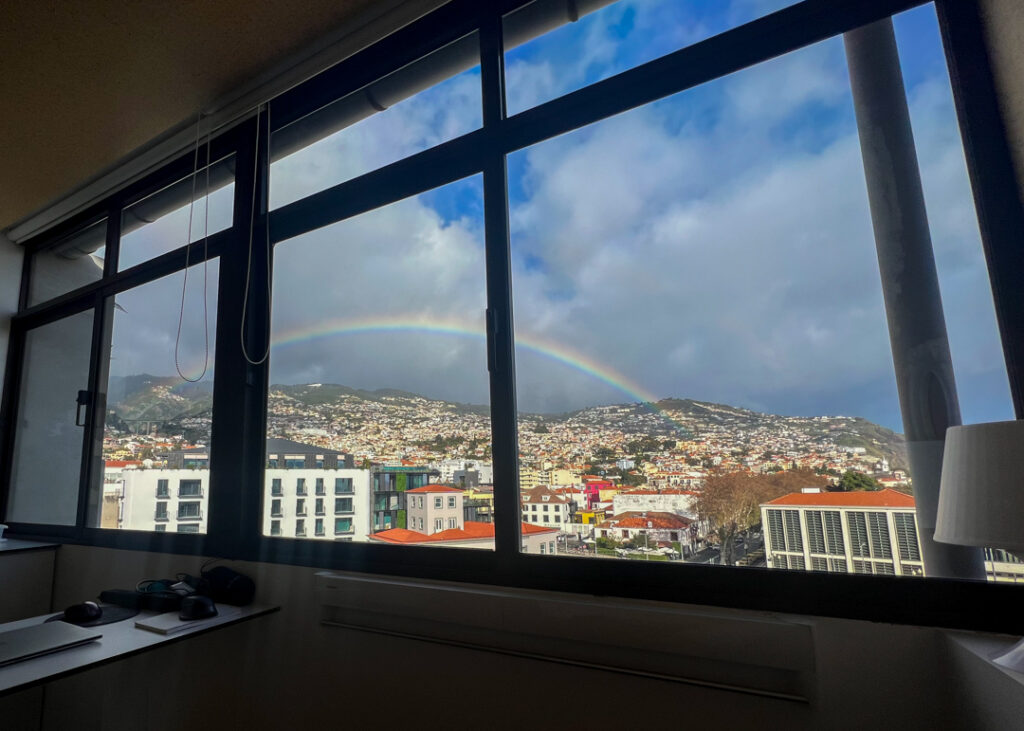
The Market
It’s also here that you’ll find Funchal’s central market, the Mercado dos Lavradores. The 1940 art deco building is a hive of activity and the central supply of the city. Try to come on a Friday or Saturday to see it at its fullest when all the farmers come down and the central courtyard is filled to the brim.
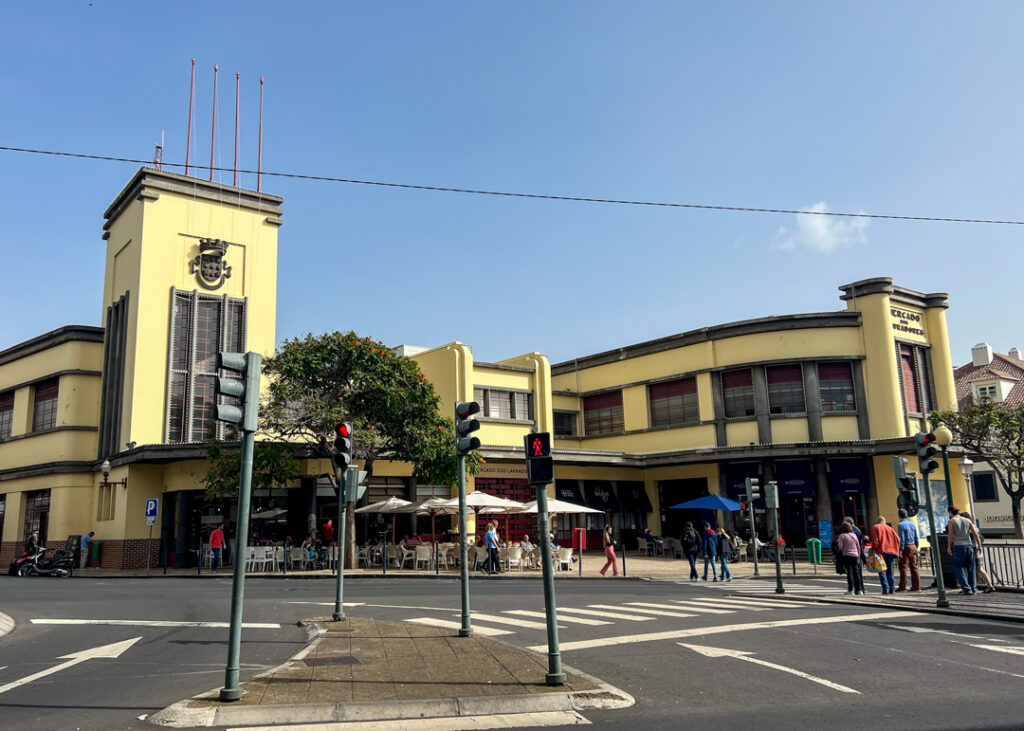
Azulejos from the mainland adorned the facade and entrance, depicting market scenes from the old days.
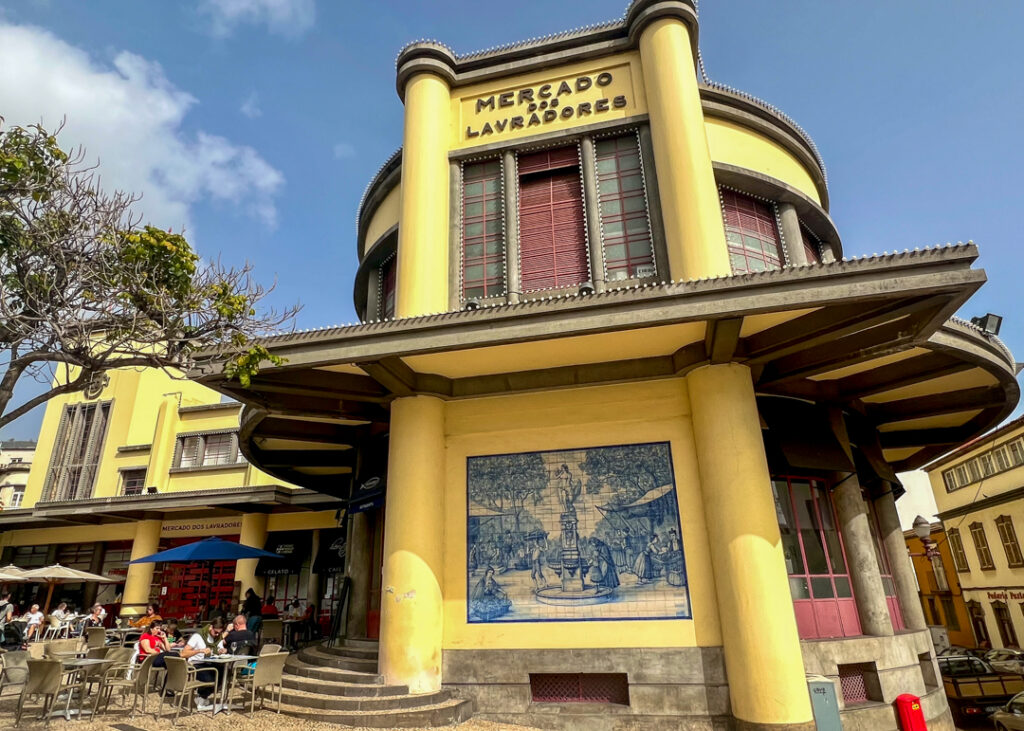
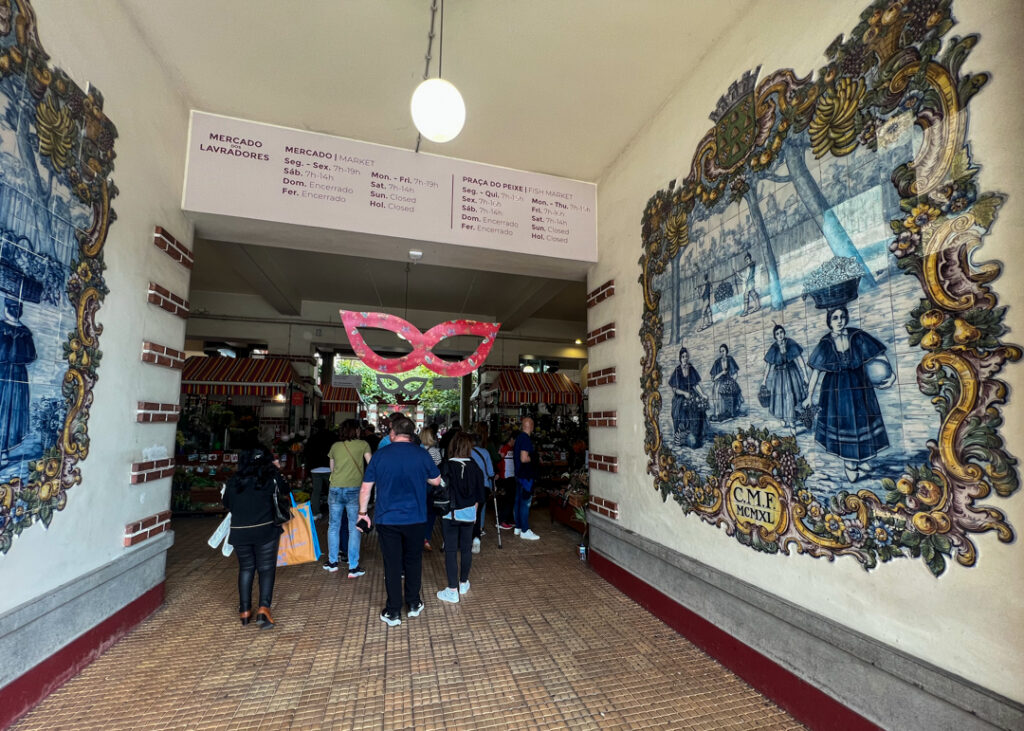
Don’t miss a peak around the back and down a few steps from the main building to see the fishermen in the morning and their catch. You will have likely seen the island’s most famous fish, the black scabbardfish, on restaurant menus, but staring at its scary alien-looking face is something else…
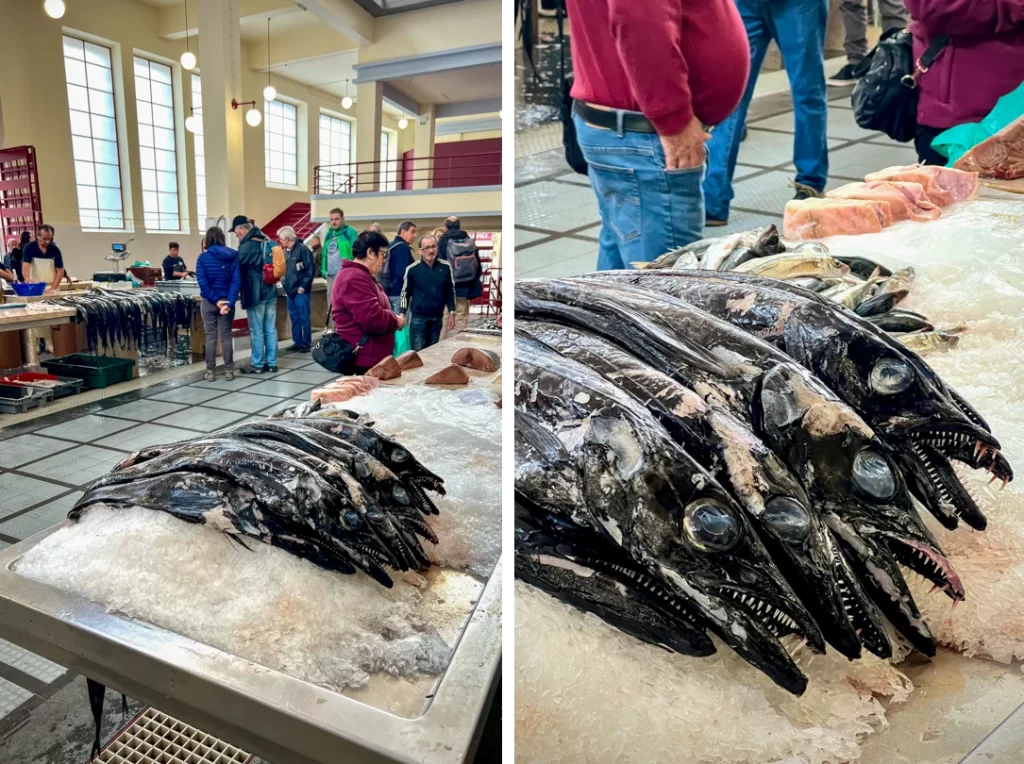
The main floor is fragrant with tropical fruits and vegetables and a few souvenir shops around it. You can also grab a coffee and a pastry from one of the few cafes and restaurants that open onto the market on the ground floor. It makes for an energizing morning to say the least!
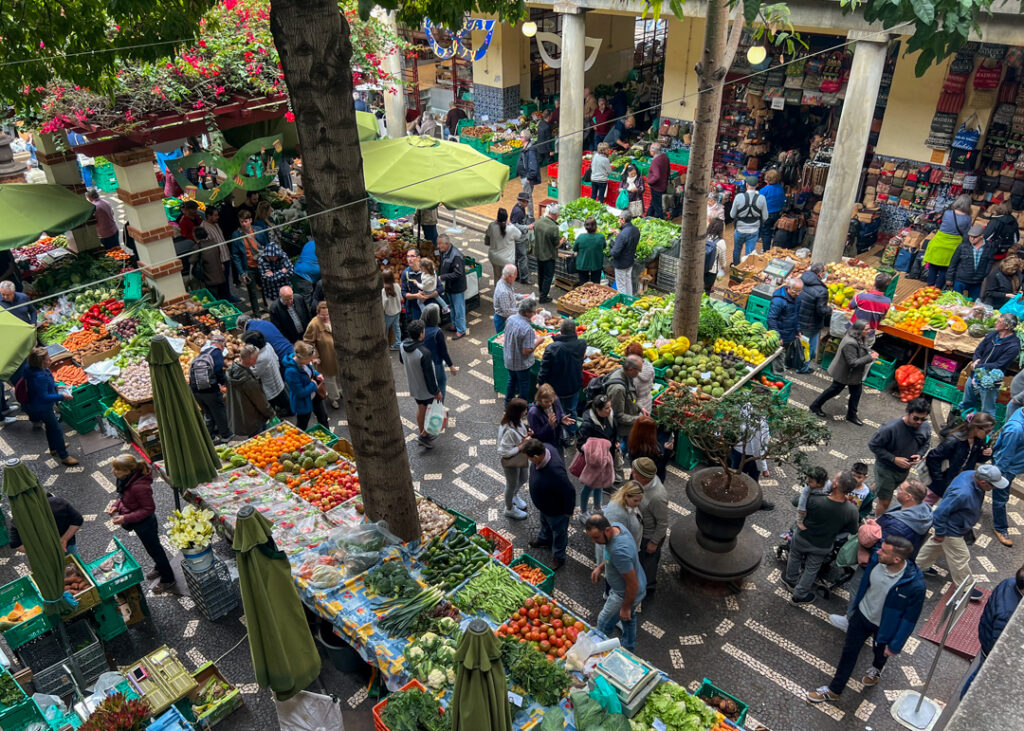
I discovered plenty of new fruits and flavors I knew nothing about, from many varieties of passion fruits to custard apples and the addictive Madeira bananas. A testament to the volcanic island’s fertile soil and favorable climate.
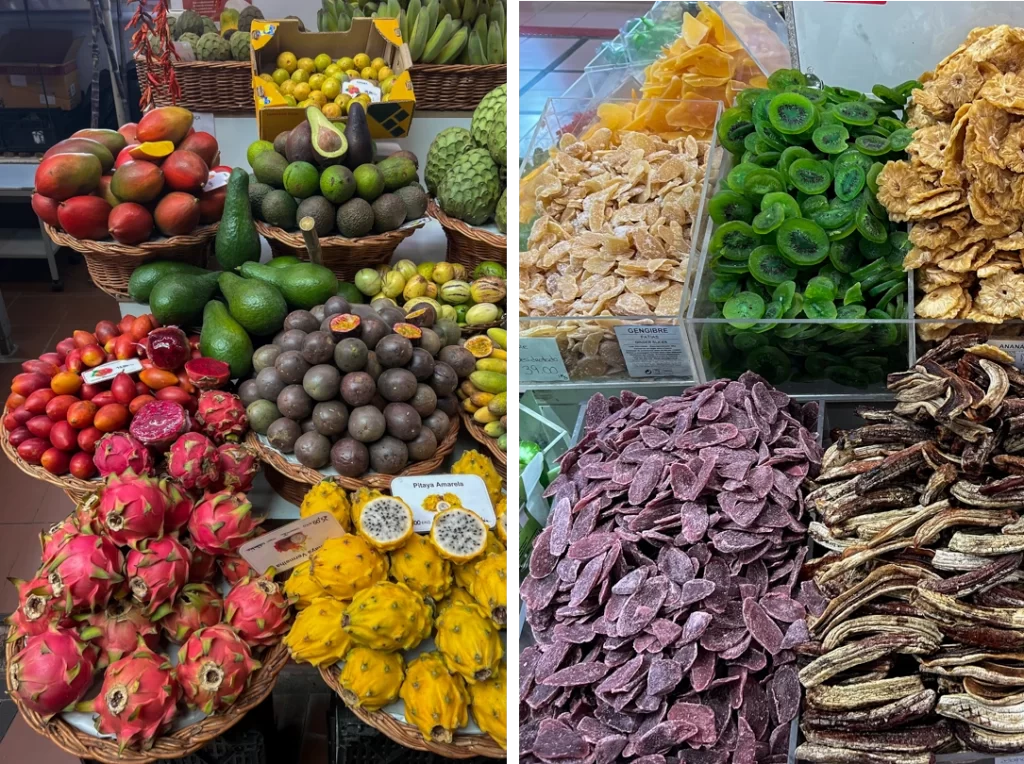
The old town
The market marks the start of the Old Town (Zona Velha) and its atmospheric cobbled alleys that invite you for a stroll. This former fishermen’s quarter has retained a few houses still untouched, their natural decay a stark contrast to the historical center’s pristine streetscape.
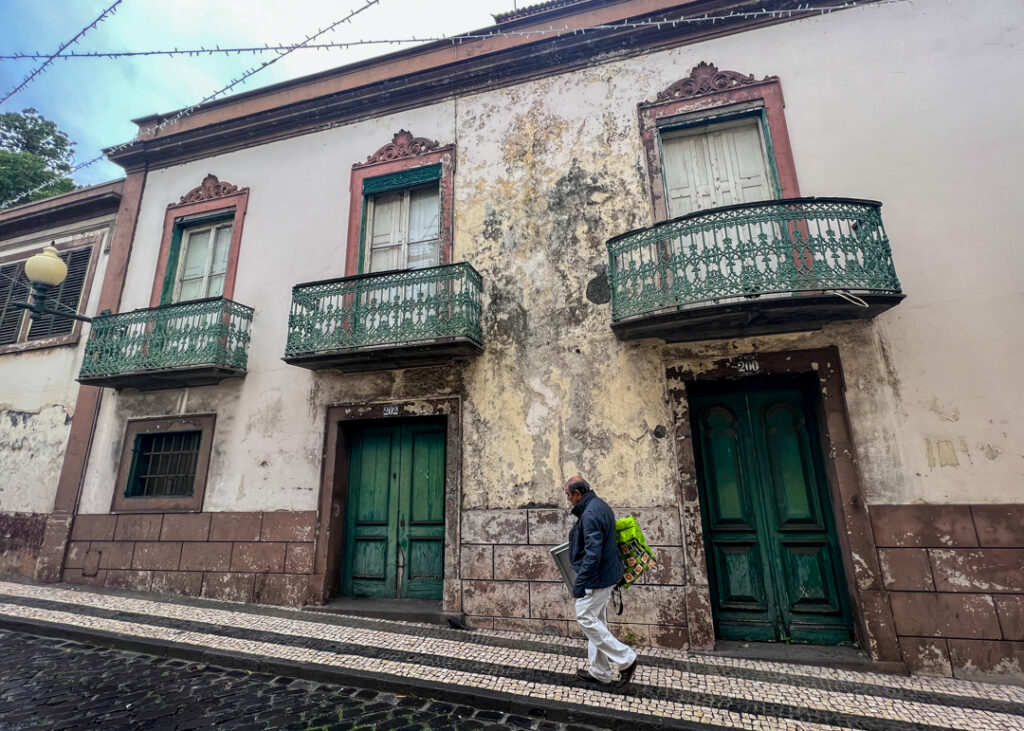
Most houses and buildings though have since been transformed and embellished for tourists.
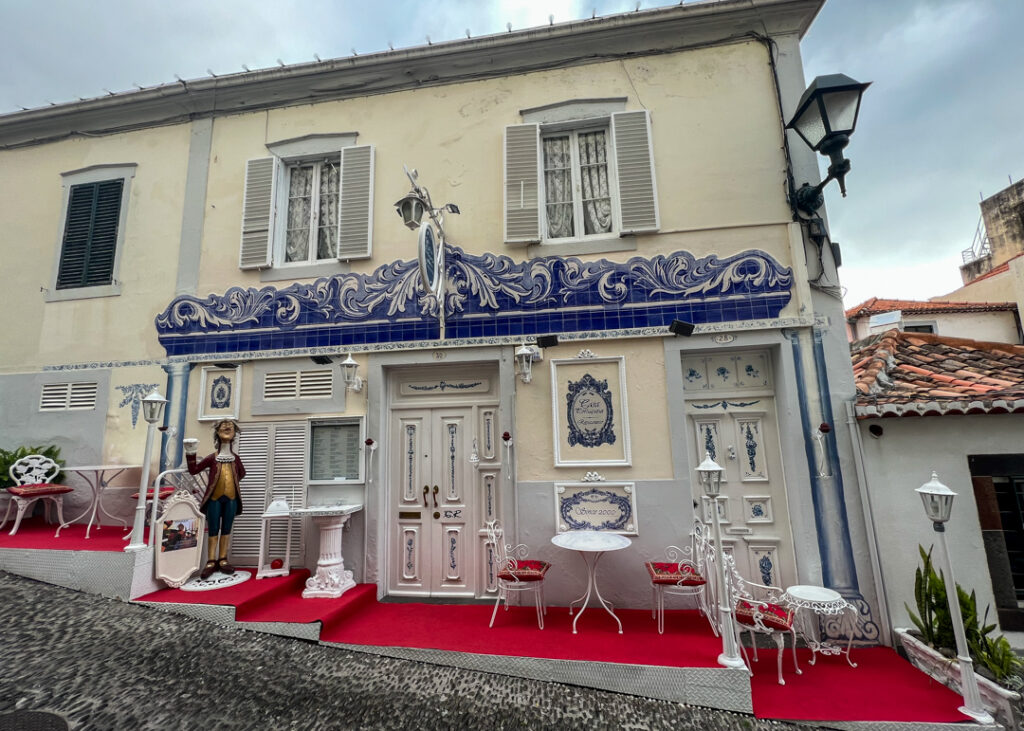
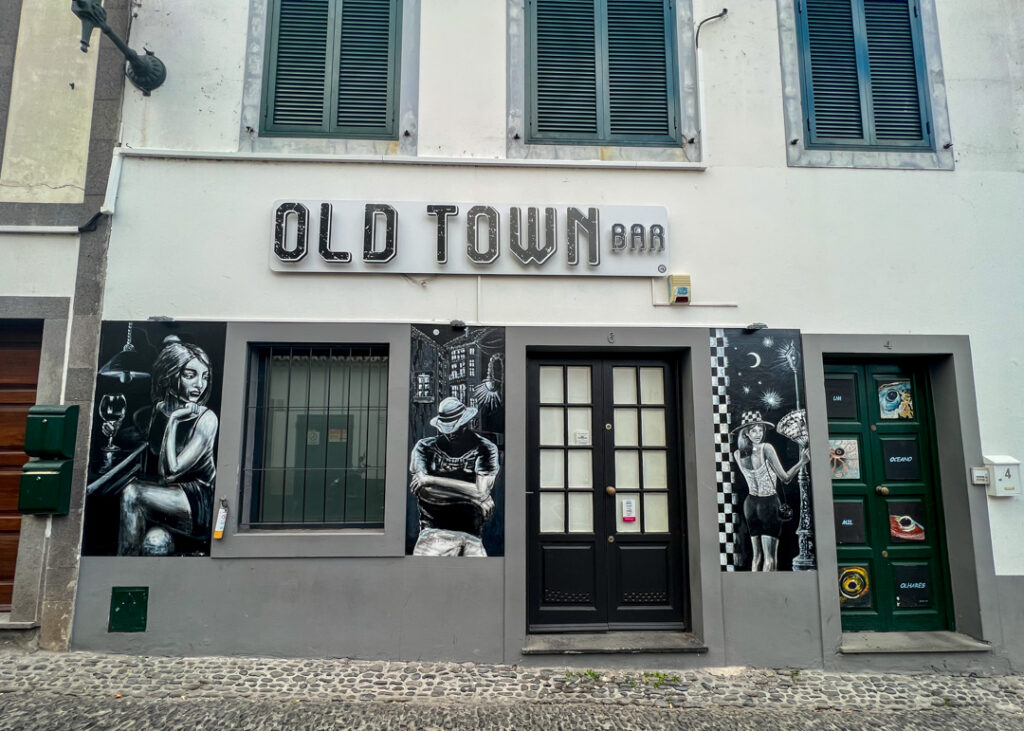
You’ll want to walk the length of pedestrian Rua Santa Maria to take in the Painted Doors Project which has turned one of Funchal’s oldest streets into an open air gallery. Over 200 doors have been painted by artists, some depicting traditional life, others much more whimsical.
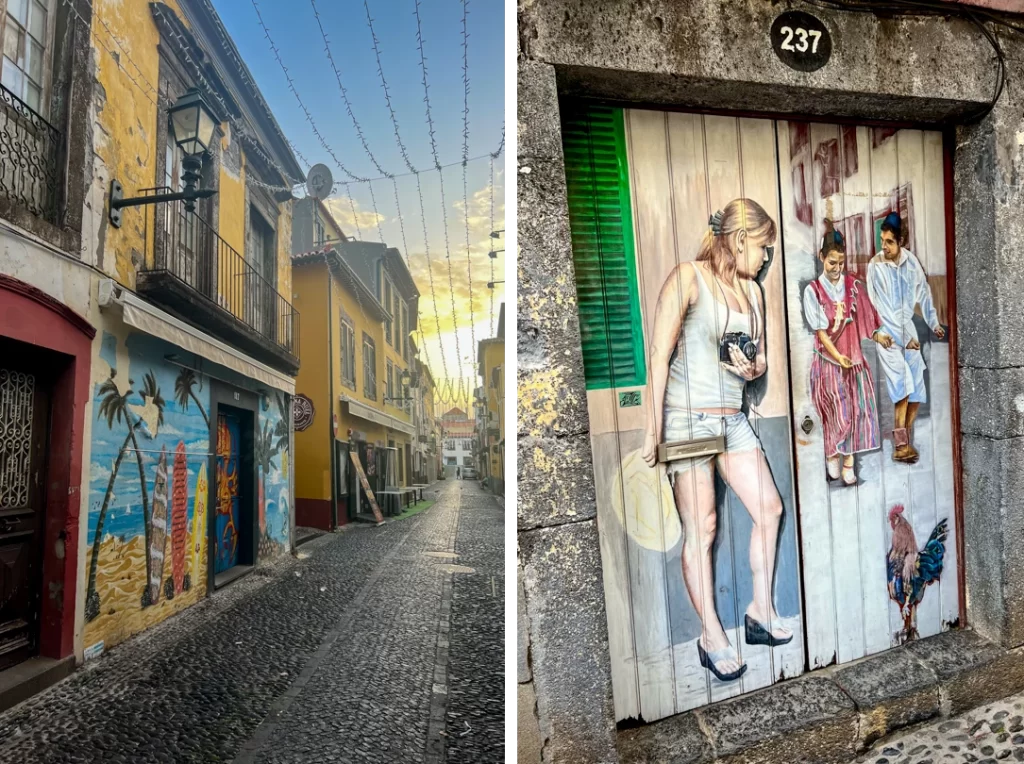
Tip: the best way to see them is to take your stroll early in the morning (say before 10am) before the shops and restaurants open. Most of these doors will be flung open all day and the street full of tables and patrons eating, hiding the wonderful art until closing time… Go there early and have the “museum” all to yourself and the best light too.
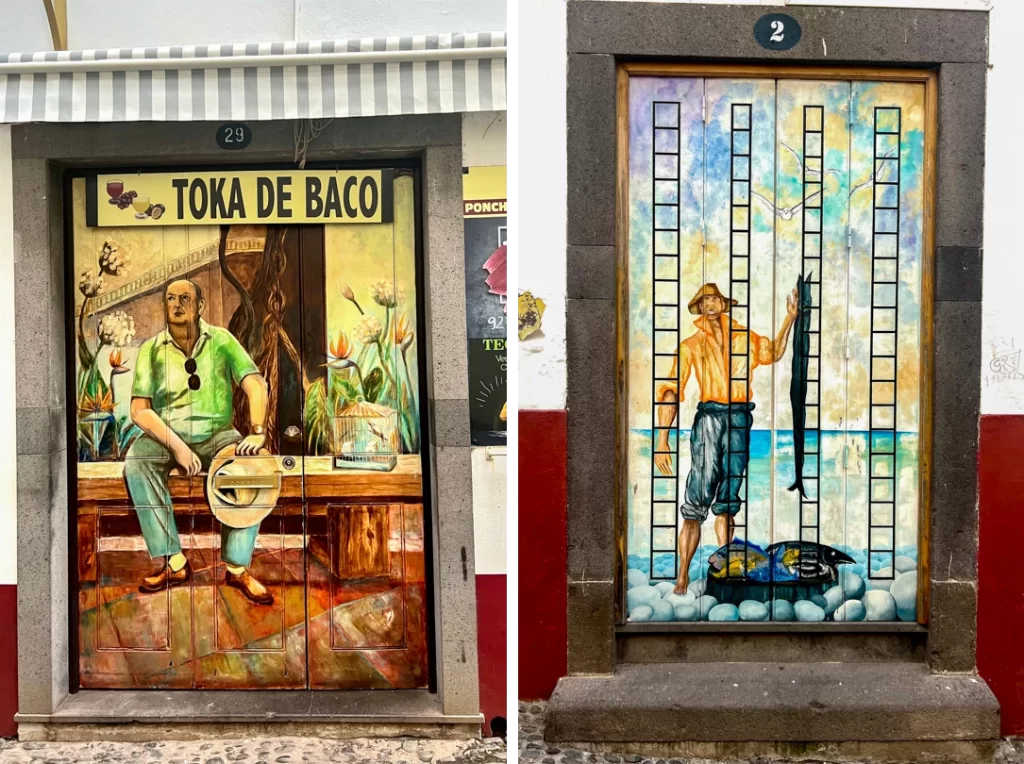
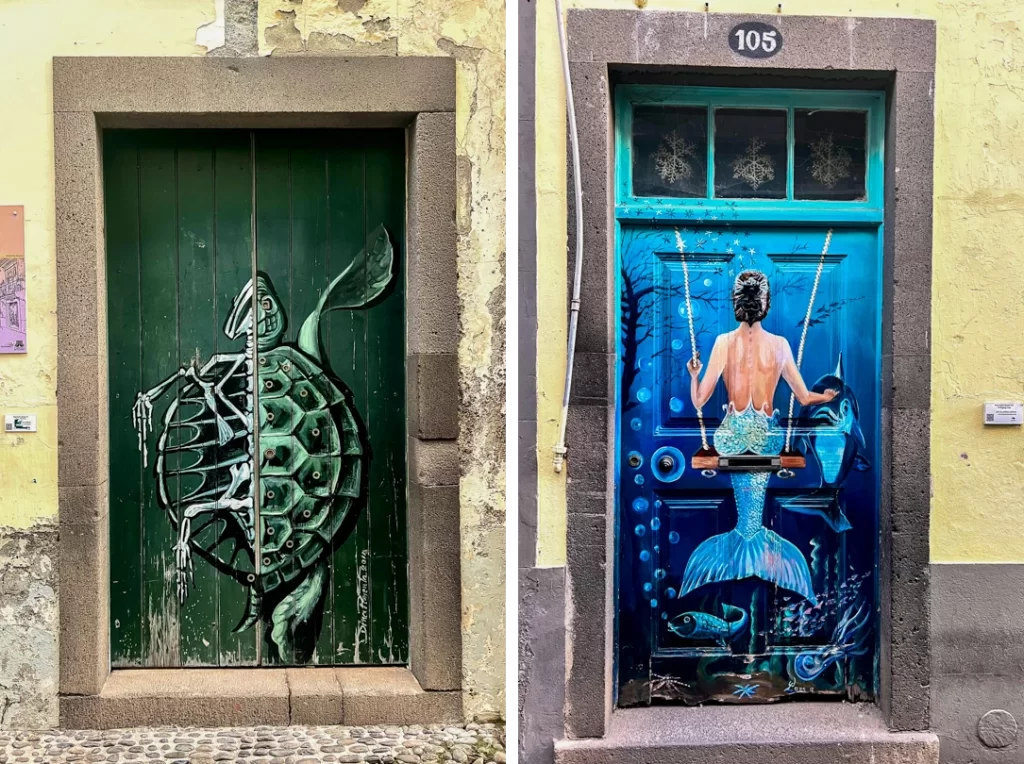
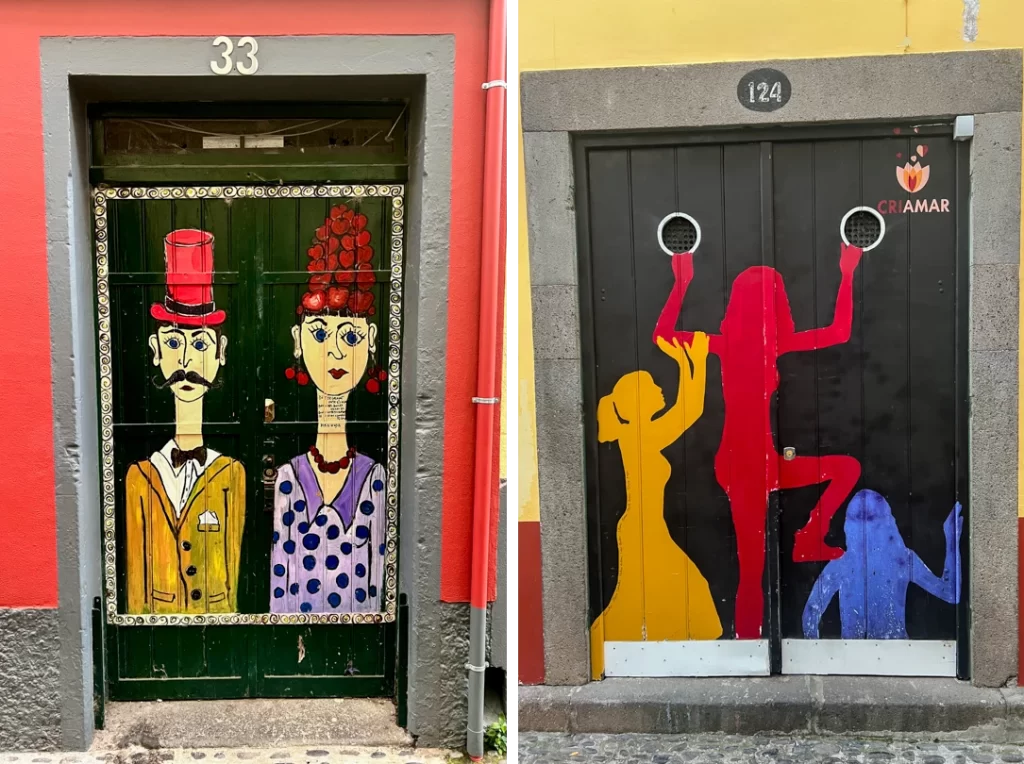
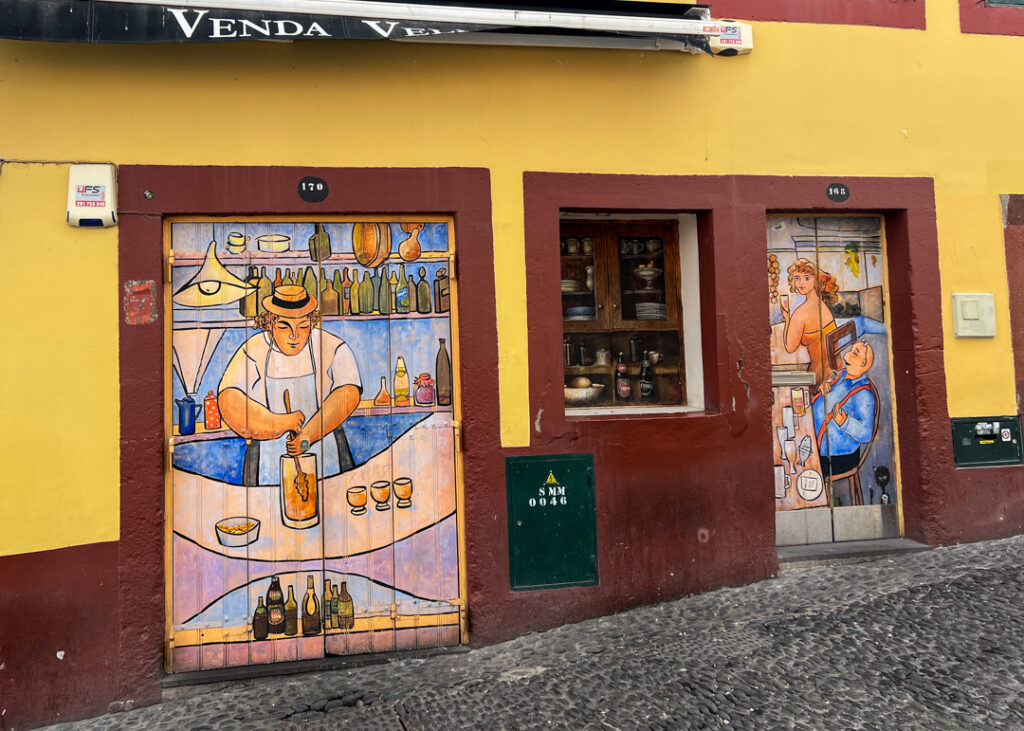
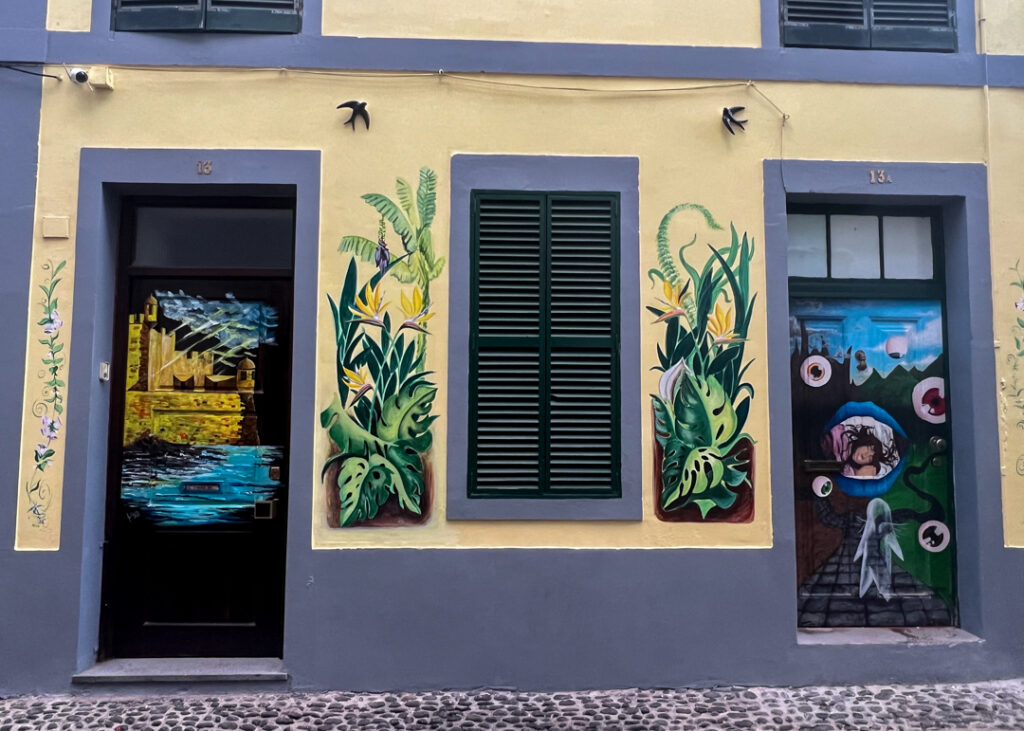
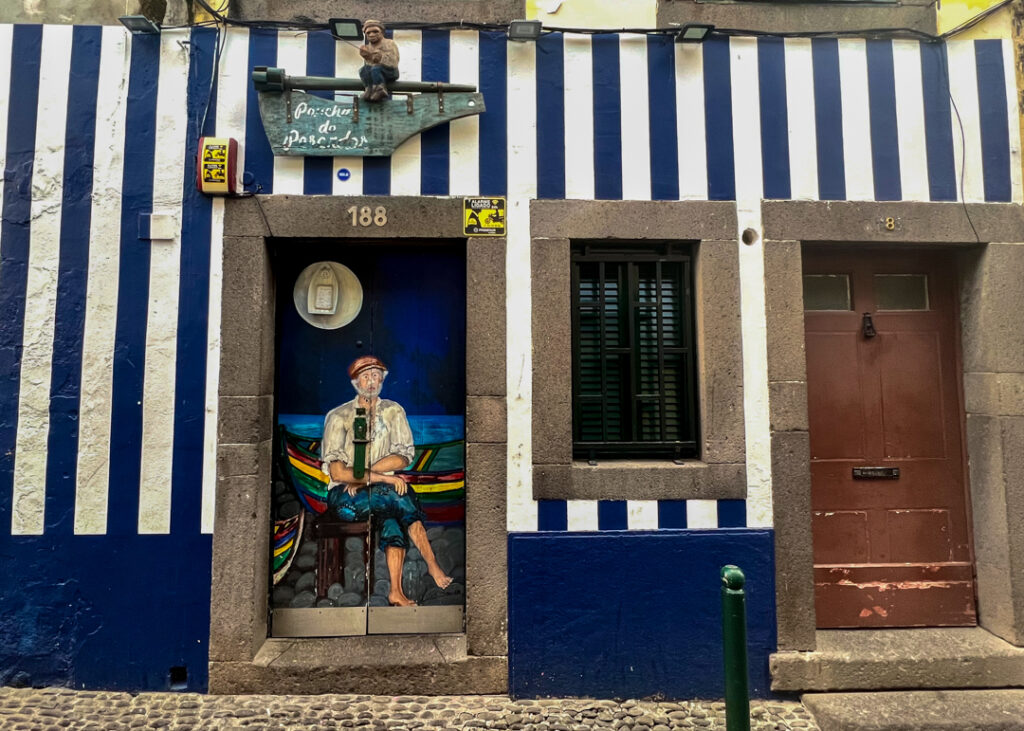
The murals often blend in with the local craft shops and their paintings, ceramics, and colorful jewelry. It’s easy to spend the day here in this attractive neighborhood right by the ocean: enjoying the quieter morning, popping into shops in the afternoon, and experiencing the evening buzz as the narrow streets fill with locals eating and drinking.
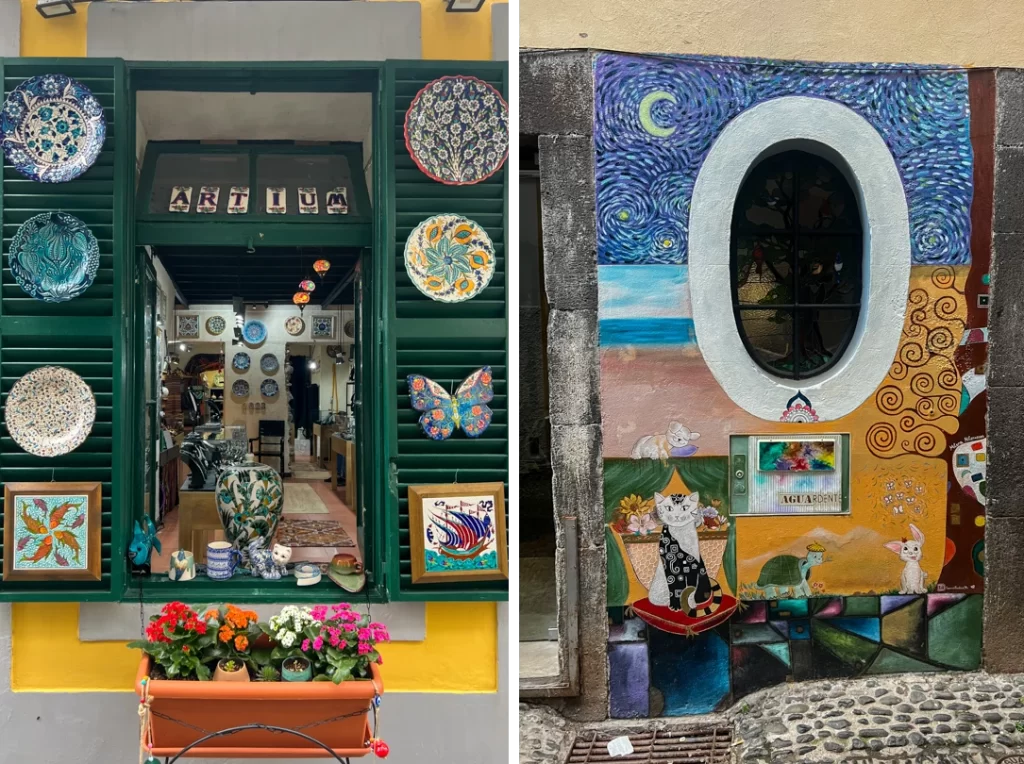
While all the action takes place in the old town, the center turns into an elegant oasis of calm.
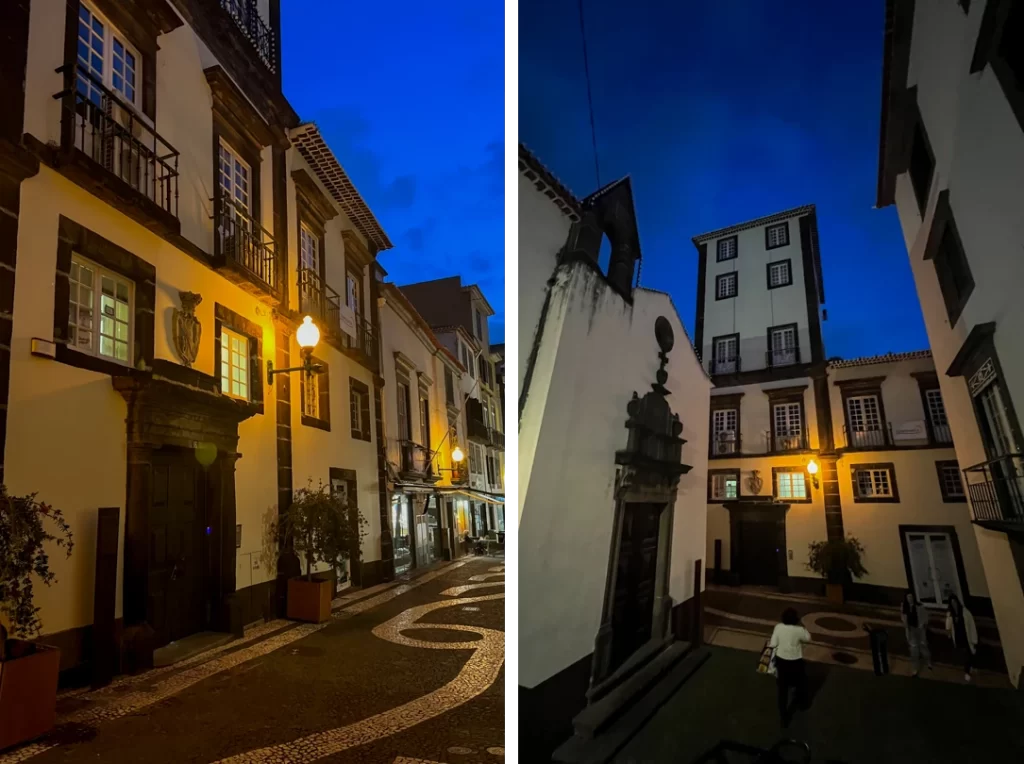
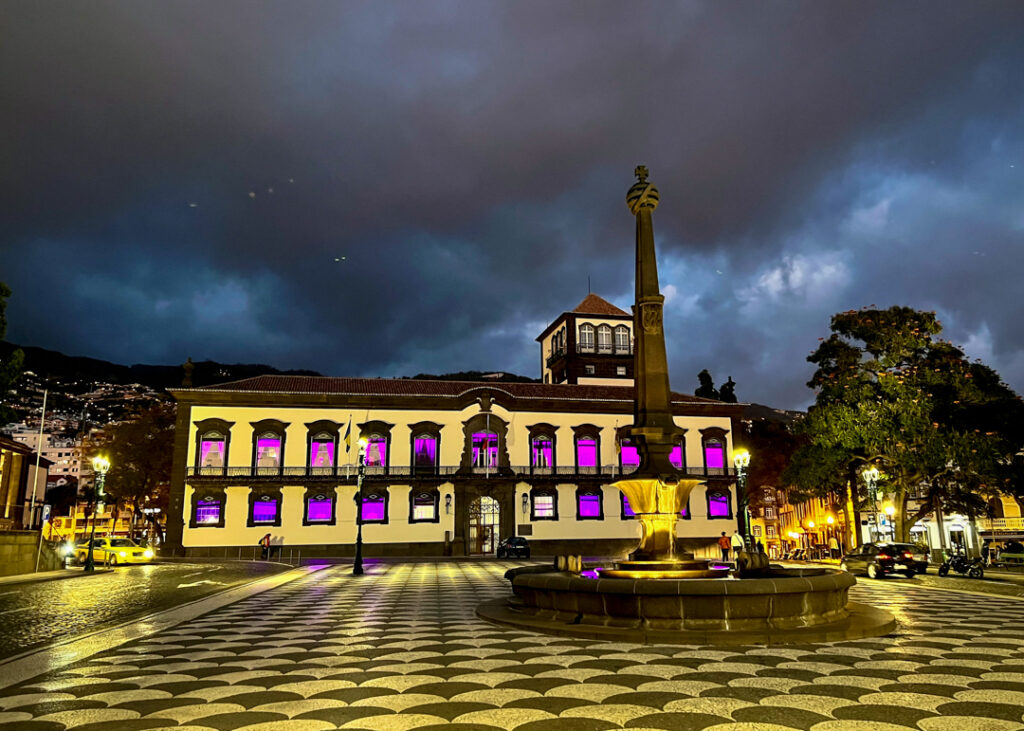
That is unless you end up visiting during one of the many festivals. I was lucky enough to be there during Carnival in February with a weeklong celebration filled with music, parades, and costumes.
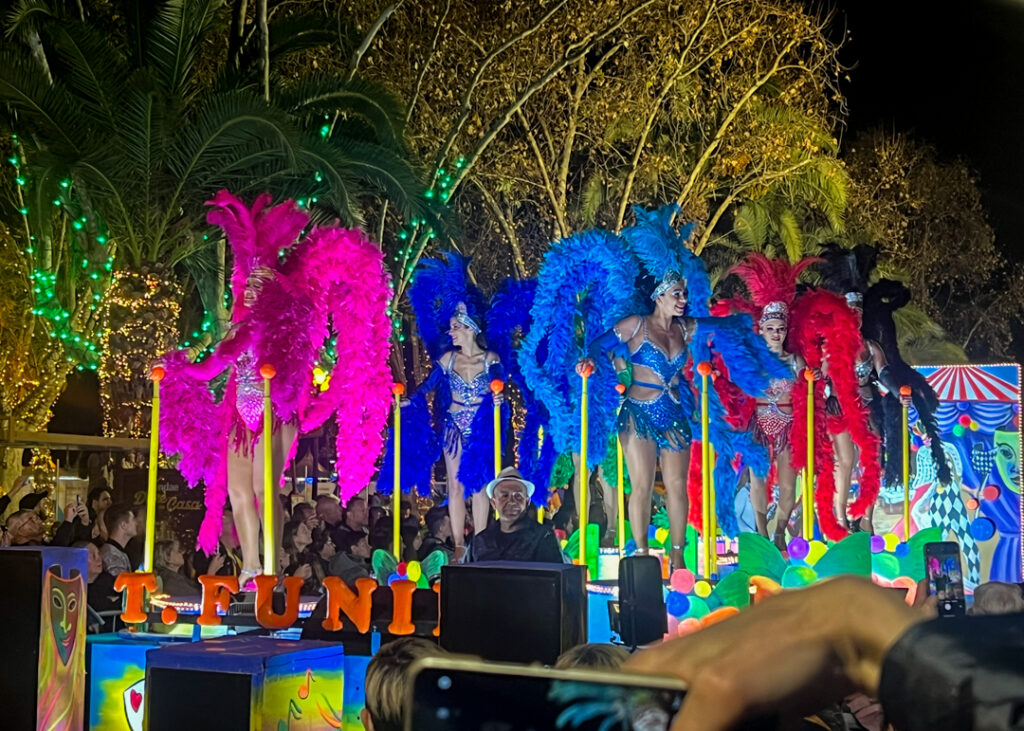
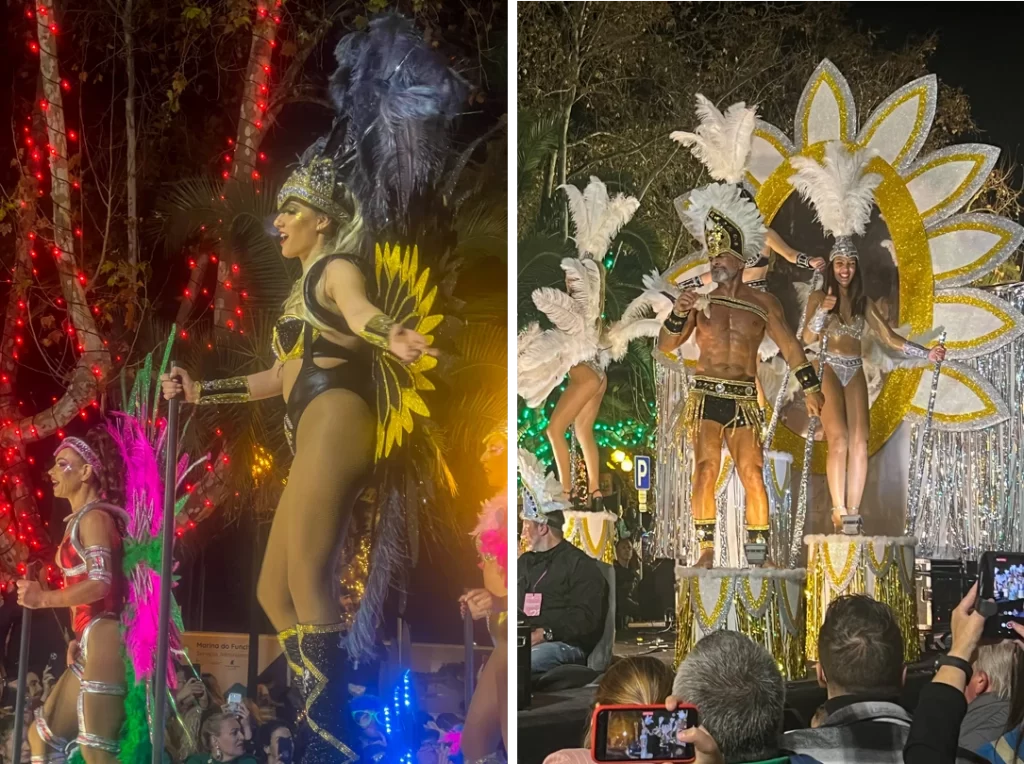
As you can see, there’s a lot packed into this compact city and even more that awaits just outside which I’ll share in upcoming posts.

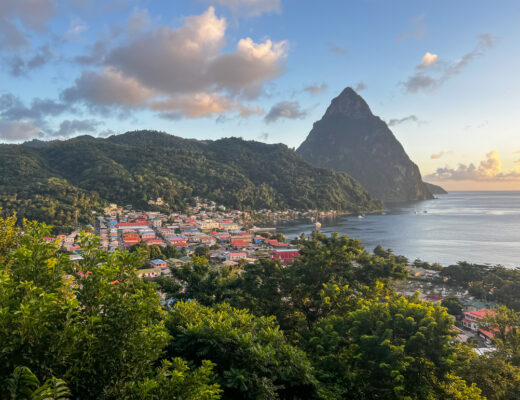

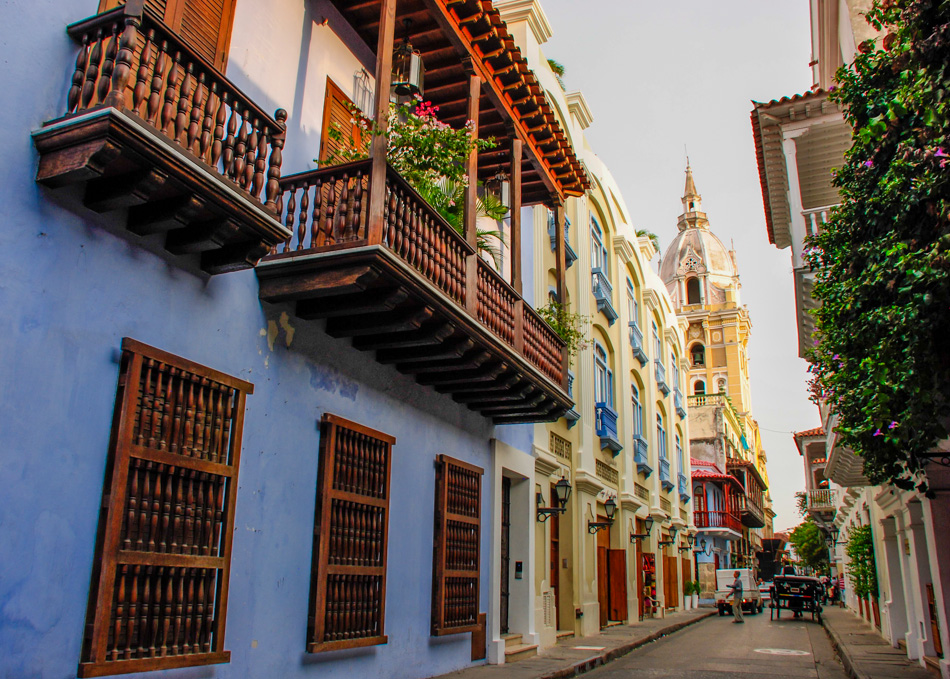


No Comments